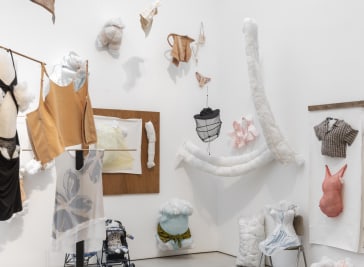
MARTHA ROSLER
Still of Pencicle of Praise
2018
HD video
RT: 12:40 min.
MARTHA ROSLER
Reading Hannah Arendt (Politically, for an American in the 21st Century)
2006
Installation of 16 transparent plastic curtains with printed text on aluminum mounts
Installation view of War Games at Kunstmuseum, Basel, 2018
MARTHA ROSLER
Off the Shelf: About Women, By Women
2018
C-print
28 by 22 in. 71.1 by 55.9 cm.
MARTHA ROSLER
Red and White Shades (Baghdad Burning), from the series House Beautiful: Bringing the War Home, New Series
2004
Photomontage
20 by 24 in. 50.8 by 61 cm.
MARTHA ROSLER
Untitled, Frankfurt (Main), from the series In the Place of the Public: Airport Series
2004
C-print
26 1/2 by 40 in. 67.3 by 101.6 cm.
MARTHA ROSLER
The Bowery in two inadequate descriptive systems
1974/75
Suite of 45 gelatin silver prints
Each framed board: 10 by 22 in. 25.4 by 55.9 cm.
MARTHA ROSLER
Diaper Pattern
1973
Installation with text on cloth diapers
138 by 110 in. 350.5 by 279.4 cm.
MARTHA ROSLER
Cosmic Kitchen II, from the series House Beautiful: The Colonies
c. 1969-72
Photomontage
20 by 24 in. 50.8 by 61 cm.
MARTHA ROSLER
First Lady (Pat Nixon), fom the series House Beautiful: Bringing the War Home
c. 1967-72
Photomontage
24 by 20 in. 61 by 50.8 cm.
Martha Rosler
Semiotics of the Kitchen (still)
1975
Black and white video
Duration: 6:33 min.
Lives and works in Brooklyn, NY
Brooklyn-based artist Martha Rosler works in video, photography, text, installation, and performance. Her work often addresses matters of the public sphere and landscapes of everyday life – actual and virtual – especially as they affect women. For many years Rosler has produced works on war and the national security climate, connecting life at home with the conduct of war abroad, in which her photomontage series played a critical part. In 2004 and 2008, in opposition to the wars in Afghanistan and Iraq, she reinstituted her now well-known series of photomontages, House Beautiful: Bringing the War Home, made as a response to the war in Vietnam in the late 1960s. She has also published several books of photographs, texts, and commentary on public space, ranging from airports and roads to housing and gentrification.
Martha Rosler was born in Brooklyn, where she continues to live and work. She attended Brooklyn College of the City University of New York and the University of California, San Diego, where she received her BA and MFA, respectively. She has had solo exhibitions at various institutions, internationally and in the US, including the Museum of Recent Art, Bucharest (2023); Tate Modern, London (2022); Museo de Arte Contemporáneo, Santiago (2019); The Jewish Museum, New York (2018); the Seattle Museum of Art, Seattle (2016); the Museum of Modern Art, New York (2012); The Centro José Guerrero, Granada, Spain (2009-10); the Centre Pompidou, Paris (2000); the Museum of Modern Art, Oxford (1990); and the Dia Art Foundation, New York (1989). A retrospective of her work traveled to 7 institutions in Europe and the United States between 1998 and 2000. She has been included in numerous group exhibitions and biennials. Rosler has also published 17 books of photography, art, and writing, in several languages. She received the Guggenheim Museum Lifetime Achievement Award in 2010 and many other awards.
All images © Martha Rosler.
Join us at e-flux Screening Room on Tuesday, January 31 at 7pm for a screening of Ana Vaz’s The Age of Stone (2013), Oraib Toukan’s Palace of the Slave (2017), Deimantas Narkevičius’s Europa 54 54′-25 19′ (1997), and Martha Rosler’s Chile on the Road to NAFTA (1997), followed by an in-person discussion with Deimantas Narkevičius and Martha Rosler.
The Talking Eye, an exhibition covering works by conceptual North American artist Martha Rosler is scheduled to open at the Museum of Recent Art in Bucharest (MARe) on December 14. From the start of her career, much of Rosler's art reflected her interest in a variety of social issues. Her interest in feminism is represented in the MARe exhibition by the series of photomontages Body Beautiful (1966–72). She protested against the Vietnam War in the series Bringing the War Home (1967–72), while also taking a sarcastic approach to the behavioral and fashion norms imposed on US waitresses in the 1970s in the series North American Waitress, Coffee-Shop Variety (Know Your Servant Series, No. 1, 1976), also included in the MARe exhibition.
In the Place of the Public: Airport Series also comprises vinyl wall texts displayed alongside and amongst the photographs at various heights. These sentences, which Rosler has selected especially for Tate, draw attention to the ways in which airport advertising, signage and architecture in the airport promise to take the visitor elsewhere, mentally as well as physically.
Martha Rosler (New York) pioneered the use of video as a tool for social and political analysis. Her practice is built on a multiplicity of artistic languages such as photography, collage or performance, and different ways of activating the social fabric through writing or teaching. The exhibition “How Do We Get There From Here?” presents a selection of works (video, photography and publications) that allow to reflect on one of the most solid, coherent and critical tendencies of our days.
Mary Kelly and Martha Rosler are both included in the group exhibition Theater of Operations: The Gulf Wars 1991-2011 at MoMA PS1.
Martha Rosler is included in the group exhibition Manifesto: Art x Agency at the Hirshhorn Museum and Sculpture Garden, Washington, D.C.
Martha Rosler is included in the group show traveling from the Smithsonian to the Minneapolis Institute of Art titled Artists Respond: American Art and the Vietnam War, 1965-1975.
This book presents a newly collected selection of essays and performance and video scripts by artist Martha Rosler, with special emphasis on the construction of the public sphere and the myths of everyday life. The book explores topics ranging from everyday life and the mass media to national security and war and conflict, especially as they affect women. Taking as a starting point her essay Domination and the Everyday —which gives the book its title—the following pages explore the long career of an artist well known for her videos, performances, photos, and other works, as well as for being one of the most original and influential cultural and theoretical critical voices of the past forty years. This book shows Rosler’s ability to create an artwork and generate a discourse to contextualize it. In texts from 1975 to 2016, Rosler reflects on feminist art, the idea of the artist-mother, and gentrification in relation to culture, among many other subjects.
Martha Rosler is included in the group show Artists Respond: American Art and the Vietnam War, 1965-1975 at the Smithsoniam American Art Museum in Washington D.C.
If you lived here, it takes its title from the work If you lived here in 1989, where Rosler interrogates the processes of gentrification and social impoverishment in the United States during the Ronald Reagan administration.
Martha Rosler is featured in the two-person exhibition, Martha Rosler / Eric Wesley, at SLASH Art in San Francisco.
On the occasion of the exhibition Martha Rosler / Eric Wesley, / is honored to present an artist talk by Martha Rosler moderated by the San Francisco-based curator Tanya Zimbardo at Minnesota Street Project on Thursday, April 18, 2019 from 7 to 8:30 PM.
Join Martha Rosler at School of the Art Institute of Chicago on Tuesday, April 16th at 6:00 pm. This event is free and open to the general public.

Martha Rosler is included in the Kochi-Muziris Biennale 2018.
This survey exhibition focuses on the influential artist Martha Rosler in the context of a decades-long practice that continues to evolve and react to the shifting contours of political life.
The exhibition presents early and recent work by both artists in dialogue to highlight the thematic similarities in their work.
Susan and Elihu Rose Chief Curator Darsie Alexander speaks with artist Martha Rosler on the occasion of her survey exhibition Martha Rosler: Irrespective at the Jewish Museum.
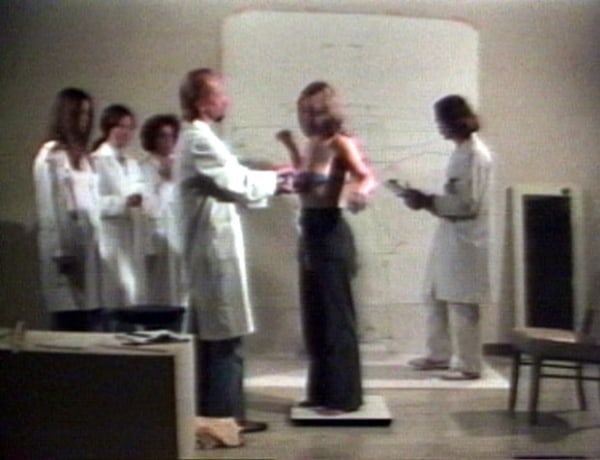
Martha Rosler's Vital Statistics of a Citizen, Simply Obtained is included in Serralves' current collection show Zéro de Conduite.

Featuring work by thirty-six global artists, Women House challenges conventional ideas about gender and the domestic space. The exhibition is inspired by the landmark project Womanhouse, developed in 1972 by Judy Chicago and Miriam Schapiro. With works that disrupted traditional ideas about the home as a feminine realm, Womanhouse was the first female-centered art installation to appear in the Western world. In the new exhibition, Women House, women artists from the 1960s to today examine the persistence of stereotypes about the house as a feminine space.
Women House was organized by Monnaie de Paris, where it was exhibited from October 20, 2017 throuh January 28, 2018.

Karl Haendel & Martha Rosler are included in The American Dream: American Realism 1945-2017, an exhibition installed across two museums, Drents Museum and Kunsthalle Emden. Both artists' works will be on display in Emden.

Organized by Gianni Jetzer, the Hirshhorn’s curator-at-large, Brand New examines the origins and rise of the key group of artists in New York City’s East Village who first used the language and objects of commerce as a radical new approach to art making.
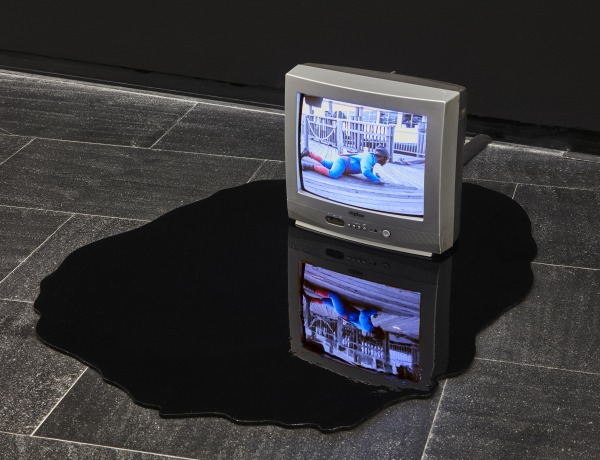
Martha Rosler and Pope.L are included in the group exhibition Elements of vogue. A Case Study in Radical Performance at CA2M, Madrid.

Celebrating the 50th anniversary of its founding, the UC San Diego Visual Arts Department is presenting a series of retrospective exhibitions at the University Art Gallery (UAG), located in the Mandeville Complex on the UCSD campus. The goal of the two-year series is to open a dialogue on the past and possible future of the department and to reconsider its role in the community and the art world at large.
Feminism and the State: Art, Politics, and Resistance is a symposium organized by The Feminist Art Project (TFAP), Rutgers, The State University of New Jersey, and presented as a part of the 2018 College Art Association Conference. The TFAP symposium will open space for a discussion of art and art history that sheds light on historical precedents and paths for feminist resistance, with a special focus on methodologies pressing at the limits of art history. Artist Martha Rosler will deliver the keynote address.
Women House is the meeting of two notions: a gender - the female - and a space - the domestic one. Architecture and public space have been masculine while the domestic space was for a long time the prison or the shelter of women: this historical evidence is nevertheless not a fatality and the exhibition Women House shows this.
Martha Rosler is included in the Hessel Museum of Art's exhibition Picture Industry.
Borrowing its title from a work of the same name by Allen Ruppersberg—who had his first New York survey at the New Museum in 1985—the event features a selection of public conversations with artists whose exhibitions, works, and interventions have shaped and transformed the identity and history of the New Museum. Engaging in dialogue with each other, the forty artists will discuss an array of topics related to their practice, their history with the Museum, and beyond.

General Idea, Mary Kelly and Martha Rosler are included in the Whitney Museum's An Incomplete History of Protest: Selections from the Whitney’s Collection, 1940–2017.
While her career has encompassed performance, photography, installation and essay writing, Rosler is perhaps best known for her work in video. MACBA Collection. Martha Rosler: God Bless America! focuses on Rosler’s video production through eleven works spanning the 1970s to 2006. The show centres on the key thematic lines in Rosler’s work, where politics as the ideological exercise of power, class hierarchy and economic interest is addressed, especially through the enactment of U.S. imperialism and the social control of women’s bodies.
Martha Rosler is featured in the Getty's Breaking News: Turning the Lens on Mass Media.
UnionDocs will screen Martha Rosler's film South Africa: crossing the river without a bridge (2016).
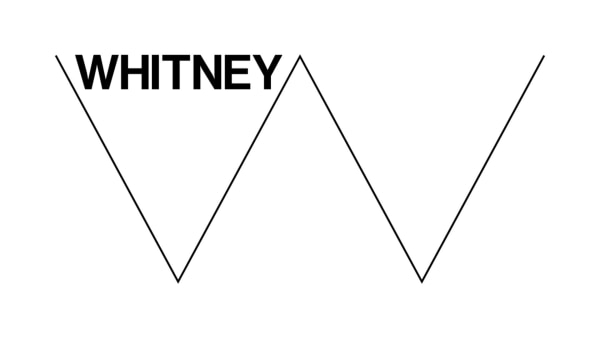
Martha Rosler describes Susan Meiselas's multi-year project Carnival Strippers, and the intensive engagement Meiselas developed in relation to her subjects.
Martha Rosler will be included in the Jewish Museum's upcoming group show, Take Me (I'm Yours). Originally conceived by curator Hans Ulrich Obrist and artist Christian Boltansky in 1995, the show encourages visitors to participate in the exhibition by touching and even taking home works of art.
For the 2016 Walter Annenberg Lecture, Rosler will speak about her multidisciplinary practice and the genealogy of conceptual and feminist art in the United States with Adam D. Weinberg, the Museum’s Alice Pratt Brown Director.
Martha Rolser is featured in Feminist Avant-Garde of the 1970s: Works From the Verbund Collection at The Photographers' Gallery in New York. The exhibition highlights groundbreaking practices that shaped the feminist art movement and provides a timely reminder of the wide impact of a generation of artists.
As part of the Artists on Artists Lecture Series at Dia:Chelsea, Andrea Bowers will give a talk on Martha Rolser's exhibtiion If you can't afford to live here, mo-o-ove!! on Tuesday, September 27 at 6:30 pm.
Martha Rosler's iconic conceptual piece The Bowery in Two Inadequate Descriptive Systems from 1974-5 is to be included in the International Center for Photography's first exhibtiion, titled "Public, Private, Secret."
Town Hall 4: Privatize!
Thursday, June 23
6-8pm
participants: Tom Angotti, Charles Chawalko, Michael Higgins, Brad Lander, Peter Marcuse, and Charlene Nimmons
Town Hall 3: "Up-and-coming": Speculation, Trending Neighborhoods, Rising Resistance! Part II
Tuesday, June 21
6-8pm
participants: Alicia Boyd, Rania Dalloul, Imani Henry, Damon Rich, Arturo Sanchez, and Mary Taylor
Town Hall 2: "Up-and-coming": Speculation, Trending Neighborhoods, Rising Resistance!
Thursday, June 16
6-8pm
participants: Brigette Blood, Arlene Davila, Greg Mihalko, Frank Morales, MS. K. Samuels and Kelly Anderson
Presented in conjunction with Galerie Nagel Draxler, Martha Rosler's House Beautiful: Bringing the War Home from 1967-72 will be included in the Unlimited Section at Art Basel 2016.
February 20, 2016
2:00 p.m.
Iris and B. Gerald Cantor Auditorium, 3rd Floor
Join Agitprop! artists Martha Rosler, Nancy Buchanan, and Andrea Bowers in a discussion on the intersection of art and activism in their practices. The speakers represent the chain of artist-driven nominations that shape Agitprop!’s evolving installation: Rosler, invited for wave one, nominated Buchanan for wave two; Buchanan in turn invited Bowers for wave three.
Free with Museum admission.

The Seattle Art Museum is pleased to present its first solo exhibition on the work of Martha Rosler opening December 13, 2015.
At key moments in history, artists have reached beyond galleries and museums, using their work as a call to action to create political and social change. For the past hundred years, the term agitprop, a combination of agitation and propaganda, has directly reflected the intent of this work.

Martha Rosler, Thomas Schestag, Ingo Springenschmid, Mladen Stilinovic, Jan Tabor
Curated by M. Christoph Aigner
Gender is socially constructed sex. Gender studies examine the way history and culture determine sex. Who a man or a woman is in a given world largely depends on the one who manipulates these images. For centuries the conception of gender has remained in the hands of religions, which have imposed ʻproperʼ social roles on the representatives of different sexes. This has been going for so long that it has come to be seen by many as the law of nature.
When the Whitney Museum of American Art opens its new Renzo Piano-designed home in Manhattan’s Meatpacking District on May 1, 2015, the first exhibition on view will be an unprecedented selection of works from the Museum’s renowned permanent collection. Setting forth a distinctly new narrative, America Is Hard to See presents fresh perspectives on the Whitney’s collection and reflects upon art in the United States with over 600 works by some 400 artists, spanning the period from about 1900 to the present. The exhibition—its title is taken from a poem by Robert Frost and also used by the filmmaker Emile de Antonio for one of his political documentaries—is the most ambitious display to date of the Whitney’s collection.
Watch This! Revelations in Media Art presents pioneering and contemporary artworks that trace the evolution of a continuously emerging medium. The exhibition celebrates artists who are engaged in a creative revolution—one shaped as much by developments in science and technology as by style or medium—and explores the pervasive interdependence between technology and contemporary culture. The exhibition includes 44 objects from 1941 to 2013, which were acquired by the museum as part of its longstanding commitment to collecting and exhibiting media art.
Watch This! includes major works by artists Cory Arcangel, Hans Breder, Takeshi Murata, Bruce Nauman, Raphael Montañez Ortiz, Nam June Paik, Martha Rosler, Eve Sussman, Bill Viola and others that highlight the breadth of media art, including 16 mm films, computer-driven cinema, closed-circuit installations, digital animation, video games and more.
The American professor Andreas Huyssen noted how in recent decades there has been slippage in the West that favors look back against that put the focus on the changes that would be about to arrive. If modernity was driven by what might be termed "future present" Postmodernism would be characterized by "present pasts."
The intricate relationship between the arts and food will be retraced and analysed in the Arts & Foods pavilion, the only thematic area of Expo Milan 2015 to be held in the city. La Triennale, will host the event from 9 April to 1 November 2015.
Martha Rosler speaks at Paris Photo 2014 with writer and educator Stephanie Schwartz, discussing everything from her early work on the subject of the Bowery, the ethical responsibilities of photographers, the paucity of critics in the US, and the overall critical reception of her work.
‘Popular, witty, sexy, glamorous’ – pop art exploded onto the cultural scene in the 1960s. The pop artists rebelled against ‘high art’ to embrace the new world of advertising, television, film stars, pop music and consumerism. Pop art shocked many but inspired even more.
The American city of the 1960s and 1970s experienced seismic physical changes and social transformations, from urban decay and political protests to massive highways that threatened vibrant neighborhoods. Nowhere was this sense of crisis more evident than in the country’s three largest cities: New York, Chicago, and Los Angeles.
The exhibition is a project organized by Mart, the museum of modern and contemporary art of Trento and Rovereto, with the collaboration of experts in history and contemporary art.
Through the development of a series of complementary contributions, the exhibition draws a distance from a simple reflection about history and offers a more complex overview regarding the topicality of the conflict, which is still today at the centre of debate.
Also on show will be the entire series of House beautiful bringing the war home by Martha Rosler, one of the most noted reflections on the relationship between war and media.
A powerful moment occurs when a narrative is cracked open, when something one expects to be presented simply for what it is, or even more, for fact, is left unguarded as one possibility among many. Suddenly, experiences or information, most typically taken for granted, are made accessible to reflection, debate and perhaps even, a deeper understanding or feeling than would have been possible before.
One of the most common assumptions about the kitchen is that it is a woman’s space. With this in mind, The Main Dish looks at how modern and contemporary kitchenware reflects attributes of the model homemaker.
Celebrating the publication of Unfamiliar Streets: The Photographs of Richard Avedon, Charles Moore, Martha Rosler, and Philip-Lorca diCorcia author and curator Katherine Bussard joins two leading lights of contemporary art, Martha Rosler and Philip-Lorca diCorcia to discuss how cities, especially New York, have shaped their practice's engagement with street photography.
Art Turning Left is the first exhibition to examine how the production and reception of art has been influenced by left-wing values, from the French Revolution to the present day.
A Selection of the New Media Collection, Musée national d’art moderne, Centre Pompidou, Paris
As a medium, the video has been influenced by the full spectrum of aesthetic currents, and has established itself both as one of the most important contemporary means of artistic expression and as critical instrument. In collaboration with the Centre Pompidou Paris, the exhibition entitled “Vidéo Vintage 1963-1983” shows the emergence of video art from the 1960s to the early 1980s by way of a selection of the most popular works in video art. Of particular interest here is the selection of three focal points “Performance and Filmic Self-portrait”, “Television: Research, Experimentation, Criticism”, and “Attitudes, Forms, Concepts”, which show the development of the video, its artistic application as well as ‘research’ and criticism.
See renowned Farm Security Administration (FSA) photographs, taken between 1934 and 1944, juxtaposed with newly commissioned photographs of 21st-century America by 12 contemporary photographers.
For her first solo exhibition at The Museum of Modern Art, New York–based artist Martha Rosler presents her work Meta-Monumental Garage Sale, a large-scale version of the classic American garage sale, in which Museum visitors can browse and buy second-hand goods organized, displayed, and sold by the artist.
For her first solo exhibition at The Museum of Modern Art, Martha Rosler (Brooklyn, New York) will present her work Garage Sale in The Donald B. and Catherine C. Marron Atrium from November 17 to 30, 2012. Rosler held the Garage Sale’s first iteration, Monumental Garage Sale, in 1973 in the student gallery of the University of California, San Diego. She advertised this controversial work as a garage sale in local newspapers and as an art event within the local arts scene. Clothes, books, records, toys, costume jewelry, personal letters, art works, and other mementos, as well as soft-core pornographic magazines and empty welfare-food containers were displayed on racks and tables for visitors to browse and buy, after haggling with the artist over the price. Rosler’s Garage Sale implicates visitors in face-to-face transactions within a secondary, informal cash economy—exactly like garage sales held outside the museum setting. On select weekends from May 12 until summer, you can be a part of this work by donating your castoffs, no-longer-wanted objects, bric-a-brac, and odd items. Click the link to the left for more information on drop off times and locations.
Organized in conjunction with the exhibition Print/Out, Printin’ takes as its starting point DeLuxe (2005), a tour de force portfolio of 60 works by Ellen Gallagher (American, b. 1965) that challenged traditional ideas of what a print could be. DeLuxe offers a multivalent constellation of ideas, touching on such issues as portraiture, identity, history, advertising, commodity, and the disruption, translation, and recasting of space. Proposing a kind of technical dissection and conceptual unpacking of this portfolio, Printin’ brings together work by more than 50 artists from multiple disciplines in a sweeping chronology that extends from the 17th century to the present day, to propose a free-flowing yet incisive web of associations that are reflected in DeLuxe. Encompassing prints, drawings, films, books, photographs, sculptures, videos, and comic strips, the exhibition features such artists as Vija Celmins, David Hammons, George Herriman, Robert Rauschenberg, Martha Rosler, and many others, forming a dense network of formal, technical, and conceptual connections and intersections.
Martha Rosler is featured in CCA Wattis Institute's More American Photographs--the exhibition will reexamine the well-known photography program of the Farm Security Administration, 1935-44, which included artists such as Walker Evans, Ben Shahn, Dorothea Lange and Marion Post Wolcott. For More American Photographs, twelve contemporary photographers will be commissioned to travel the United States, documenting its land and people. More American Photographs aims to add to the FSA's project through the lens of the twenty-first century, which highlights, amidst natural disasters, the collapse of the housing boom, and a general lack of economic mobility, the distinct effects on different communities.
State of Mind: New California Art Circa 1970, co-organized by Orange County Museum of Art (OCMA) and UC Berkeley Art Museum and Pacific Film Archive (BAM/PFA), is the most comprehensive exhibition to date to focus on Conceptual art and related new genres in both Northern and Southern California during this pivotal period in contemporary art. Featuring more than 150 works of art, the exhibition includes installations, photographs, works on paper, videos and films, artists’ books, extensive performance documentation, and other ephemera. This includes newly discovered work as well as materials culled from archives that have rarely been viewed. State of Mind: New California Art circa 1970 is supported by a grant from the Getty Foundation as part of the unprecedented collaborative initiative Pacific Standard Time: Art in L.A. 1945–1980.
Martha Rosler will be included in the Singapore Biennale 2011: Open House. Featuring 60 artists from 30 countries, the third Singapore Biennale will be open to the public from 13 March to 15 May 2011. Over half of the artists are creating new commissions or premiering new works. 'Open House' is presented across four exhibition venues, each with their own particular character, that draw upon emblematic spaces in Singapore: Housing Development Board flats (Singapore Art Museum and 8Q), shopping centres and night markets (National Museum of Singapore), and international air and sea ports (Old Kallang Airport). In addition to a community garden project at the Old Kallang Airport, Rosler has been invited to give the Keynote Lecture on March 12.
Brooklyn Museum Seductive Subversion: Women Pop Artists, 1958–1968 October 15, 2010–January 9, 2011 Elizabeth A. Sackler Center for Feminist Art and Morris A. and Meyer Schapiro Wing, 4th Floor This large-scale exhibition examines the impact of women artists on the traditionally male-dominated field of Pop art.
Mitchell-Innes & Nash is pleased to announce Martha Rosler in Dress Codes, the third ICP Triennial exhibition.
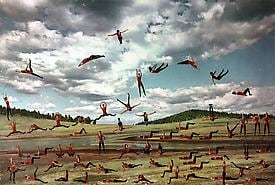
Mitchell-Innes is pleased to announce a survey of photographic and video works by Martha Rosler at Centro José Guerrero in Granada. The exhibition is curated by Juan Vicente Aliaga.
Organized by guest curator Lydia Yee, Street Art, Street Life examines the street as subject matter, venue, and source of inspiration for artists and photographers from the late 1950s to the present. This far ranging exhibition, one of the largest to consider the subject, includes street photography; documentation of performance, events, and artworks presented in the street; works using material from the street; and examples of street culture by more than thirty artists.
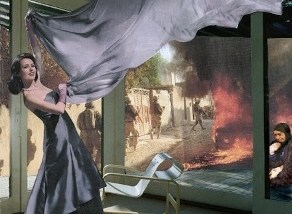
Matters of truth permeate public discourse, yet what the word itself denotes remains unstable, and the connection of truth utterances to the real is always at issue. This is a truism, but the contours of our fascination with truth, fact, objectivity—and somewhat belatedly, authenticity—have evolved, in tandem with the social changes brought about by the growing consolidation of industrial capitalism and the corollary urbanization. Newspapers and magazines, with greatly expanded reach and influence on a mass public, were pressed to develop a professionalized code of conduct in the face of government censorship. Their innovation was “objectivity,” a new seal of truth on public narratives.
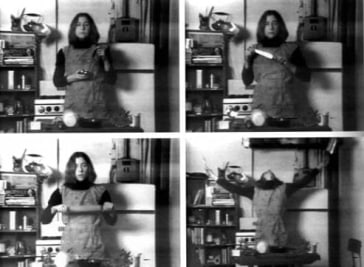
Adrian Piper’s Catalysis III, in which the artist walked around New York City wearing a shirt emblazoned with the words ‘wet paint’ helped push artist Warren Neidich to moisten the age-old term Conceptualism. Piper along with Yoko Ono, Mary Kelly, Martha Rosler, and Judy Chicago had to await the crisis in social, political, and cultural conditions that the rise of the information and knowledge economy provoked for their exploits to be appreciated as part of the conceptual genre. Significantly, the importance of immaterial objects was superseded by immaterial labor which was performative. GR: I really liked Rosler’s Semiotics of the Kitchen. Could you briefly break down its “Wet” characteristics for me. WN: Sure. Semiotics of the Kitchen is the perfect Wet Conceptual work. The cooking video spoof was a parody of the Julia Childs’ cooking show airing at that time. Staged in a mundane kitchen with the apparatuses of cooking displayed in front of her, Rosler picks up each instrument in order to demonstrate their use but does so in a transgressive and dubious manner that throws up the entire lexicon of woman’s work into disarray suffused with anger and aggression. She stabs at the air in the imaginary space of ideology and patriarchy that binds woman to unpaid labor.
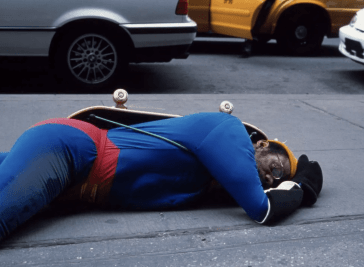
The works ranked below take many forms—painting, sculpture, photography, film, performance, even artist-run organizations whose activities barely resemble art. Binding all of these works is one larger question: What really makes a city? These 100 works come up with many different answers to that query, not the least because a significant number of them are made by people who were born outside New York City. When Martha Rosler made her work, the Bowery was associated with alcoholism and homelessness—societal issues that many would prefer not to see. In an attempt to reverse the invisibility, Rosler took pictures around the Manhattan street, pairing her black-and-white shots with short texts she collected that refer to drunkenness and drinking. No New York artwork may have been quite as grueling to produce as The Great White Way, a performance begun by Pope.L in 2001 that involved traversing the 22 miles from the southernmost tip of Broadway in Manhattan to his mother’s home in the Bronx. The catch: Pope.L went that distance not by foot but on his elbows and knees. The Great White Way is one of Pope.L’s famed “crawls,” a painstaking series of works that are often performed in public. This one involved the artist wearing a Superman suit—a reference to his aunt’s love for the comic-book hero, and to Pope.L’s fascination with her passion for a white man who was not even human—with a skateboard strapped to his back.
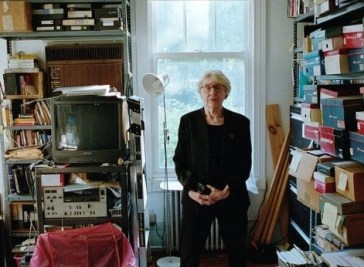
Rosler, 80, has earned the strange distinction of being the institutionally celebrated godmother of American protest art. Using media ranging from performance and video to photography and sculpture, she has been mounting an unrelenting opposition to America’s various social injustices — and to many of its citizens’ willful ignorance of them. She’s made provocative work addressing the subjugation of women (take, for example, her influential series of feminist photomontages “Body Beautiful, or Beauty Knows No Pain,” circa 1966-72); the horrors of the wars in Vietnam, Iraq and Afghanistan (as embodied in her late ’60s photomontage series “House Beautiful: Bringing the War Home,” reprised in 2004 and 2008); the country’s ongoing housing crisis (most famously touched upon in “If You Lived Here …,” the exhibition series she organized in 1989); and the media’s role in perpetuating these ills, the critique of which lurks in the background of almost all her projects. Over the decades, as the political environment has moved left and then right, her early and midcareer works have resurfaced again and again, reminders that history is often cyclical. But if many of her peers from the late ’60s and ’70s have since softened their radical stances, Rosler remains a die-hard. In her persistence, though, there is also optimism. “I do feel that I’m looking for a way to convey something essential or true,” she said to me, almost with embarrassment, at one point. “Of course, in eras of deconstruction you can hardly refer to truth. But I still can’t get past this.”
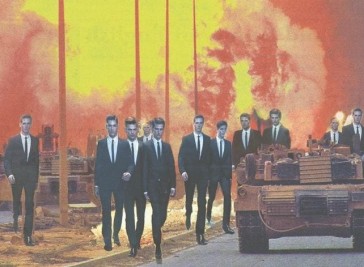
Celebrating collage as a fine art form is essential to understanding art history. Many contemporary collage artists continue to create visual narratives by cutting or tearing and pasting together found, printed imagery and ephemera. Martha Rosler, who has been active since the 1960s, uses collage to confront socio-political issues through energetic compositions that compel us to rethink normative narratives. Her House Beautiful: Bringing the War Home, New Series, (2004–2008) re-examines an earlier body of work centered on war through the lens of problematic U.S. involvement in Afghanistan and Iraq. She painstakingly blends immaculately cut glossy and grisly imagery to create flawless compositions that undermine the mainstream media and amplify the impact of war on all of us, even from afar.
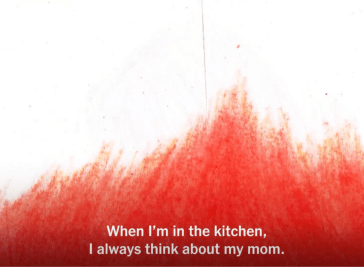
My mom and I rarely talk about anything serious. There always seems to be this invisible fence between us, even though I’m an only child, her only daughter. You know how sometimes you remember the wise thing your parents said to you when you were a kid? In my case, it was my mother telling me, “Don’t grow up like me.” She said that repeatedly when I was young. To me, this meant I’d better have a well-paying career so I wouldn’t end up a housewife like her. Without even noticing it, I let this internalized misogyny shape my life. I’m never “girly”; I hate cooking. (As for the moneymaking career, unfortunately, I ended up in animation.) In her short film “Semiotics of the Kitchen,” Martha Rosler shifted the traditional language around the kitchen to something violent, frustrating and radical. And because of how I grew up, the kitchen has always been a frustrating space that I refused to enter. But after all these years of absence, now I’m at the stove. Cooking for leisure is my way of reclaiming feminism — as well as hopefully bringing my mom and me closer.
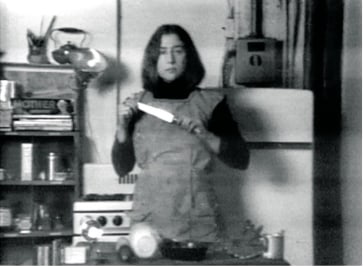
There's something about video art that calls for grand theories and epic summations, wild pronouncements and heroic declarations. It’s exciting to see a new technology appear in one’s lifetime and to feel some kind of ownership over it, to see it for what it is or, even more importantly, what it did—how it cut through the world. While the earliest video artists, people like Frank Gillette and Ira Schneider, opened their work to network TV, Dara Birnbaum “talked back to the media” by launching a systematic inquiry into its parts and clichés, creating compendiums of reverse shots, two-shots, and special effects. Martha Rosler did something similar in her ersatz home-cooking demonstration Semiotics of the Kitchen in 1975, while the Canadian collective General Idea built on these investigations of media codes in their half-hour talk shows, such as Pilot, 1977, and Test Tube, 1979, which might have aired during prime time if they hadn’t been telling the media to “shut the fuck up.”
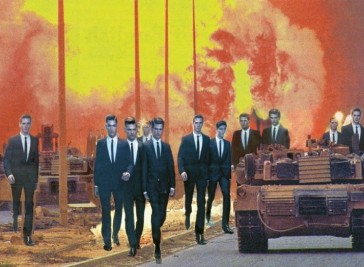
Phaidon’s latest contemporary art survey in the Vitamin series focuses on the underrated medium of collage. A publisher’s statement as: “an artistic language comprising found images, fragmentary forms, and unexpected juxtapositions. While it first gained status as high art in the early 20th century, the past decade has seen a fresh explosion of artists using this dynamic and experimental approach to image making.” A selection of curators, directors and writers (including myself) nominated more than 100 artists prominent in the field such as Clotilde Jiménez of Mexico, Mohamed Bourouissa of Algeria, the American Martha Rosler and the UK-born Georgie Hopton. “The end result features both analogue and digital approaches, overturning any narrow definitions and revealing collage as one of the most exciting and varied art creative processes used by artists today,” writes the publication editor, Rebecca Morrill.

Martha Rosler recorded Semiotics of the Kitchen, a six-minute performance art piece, in 1975. Several years ago, someone posted it on YouTube, without the artist’s permission but much to her amusement and satisfaction. The film begins with a tight closeup on Rosler, who is in her early thirties but looks younger. She is wearing a black turtleneck and pants, her long, wavy hair parted in the middle. As the camera pulls back, we see that she is standing behind a small wooden table covered in cooking implements, with a refrigerator and stove behind her. She gazes directly into the camera with a neutral expression, then proceeds to name contents of her kitchen while demonstrating their uses, in alphabetical order and with increasingly aggressive body movements. “Apron,” she says, while tying it on. Moments later she stabs at the air with a fork, drives an ice pick into the table, and flings the invisible contents of a ladle over her shoulder.
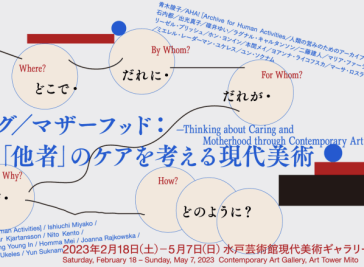
Twenty-two best art exhibitions in the Kanto area and beyond to look forward to in 2023. Care is an essential element of our society. Featuring a diverse range of works, from expressions born out of second-wave feminism to the reading of private childcare diaries, this exhibition will seek the possibilities of empowerment through works of contemporary artists and the placemaking that strengthens the connection between the public and care. Participating artists are Ryoko Aoki, AHA![Archive for Human Activities], Miyako Ishiuchi, Mako Idemitsu, Yui Usui, Ragnar Kjartansson, Kento Nito, Maria Farrar, Young-In Hong, Mei Homma, Martha Rosler, Mierle Laderman Ukeles, and Yun Suknam.

Even in 2023, works by female artists are still underrepresented in the Kunstmuseum Basel collection in Switzerland. Its new exhibition "Fun Feminism" presents some forty pieces, dating from the 1960s to the 1990s, as well as a selection of more recent works by contemporary Swiss and international artists. This includes Guerrilla Girls, Pipilotti Rist, Martha Rosler, and Rosemarie Trockel. For more than half a century, artists, art historians, gallerists, collectors, and curators have been working to represent female perspectives in the visual arts within exhibition spaces, museums, publications, and archives. This exhibition has chosen a feminist prism, deliberately irreverent and sometimes provocative, to break the stereotypes usually associated with women.
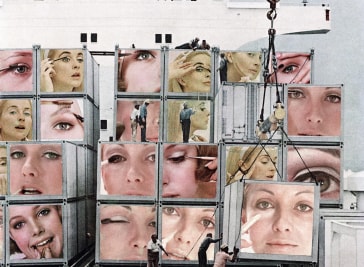
The photomontages on view at Martha Rosler: Changing the Subject… in the Company of Others, at Mitchell-Innes & Nash in New York through January 21, are at once striking and deeply familiar, whether you’ve seen them before or not. Made between 1966 and 1972, the works from Rosler’s series Body Beautiful, or Beauty Knows No Pain, convey a radical and playful feminist analysis of advertising that has by now become conventional wisdom. In Cold Meat I and II, refrigerators hold red buttocks and breasts in addition to the usual suburban provisions; in Transparent Box, or Vanity Fair and Isn’t it Nice…, or Baby Dolls models advertising lingerie are overlaid with breasts, lips, and pubis—the real products. Pop Art, or Wallpaper takes this critique to its natural conclusion with a medley of disembodied women’s body parts organized almost like butterflies, sorted by genus and pinned to wood, limbs lined up to the point of abstraction.
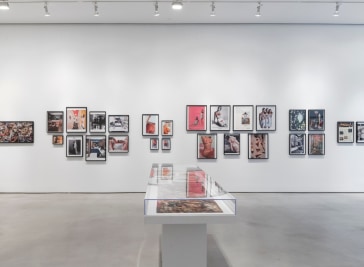
Videos, photo collages, and installation works from the sixties and seventies convey the restless invention of this feminist Conceptualist’s early career, as well as the tumult of the era. A partial reprise of Rosler’s 2018 retrospective, at the Jewish Museum, this dense exhibition shows the artist honing her incisive, acerbic strain of media critique, informed by the antiwar, anti-imperialist stance of the women’s movement. “House Beautiful: The Colonies,” a collage series from 1969-72, juxtaposes imagery of the space race with spreads from home-décor magazines, dramatizing the twin forces of American expansionism and consumer culture. “Diaper Pattern,” from 1973-75, is a hanging grid of cloth diapers, each bearing a handwritten quote reflecting the dehumanizing, racist rhetoric fuelling the Vietnam War. In this deceptively airy work—as in Rosler’s iconic performance-based films “The Semiotics of the Kitchen,” from 1975, and “Martha Rosler Reads Vogue,” from 1985—the artist zeroes in on connections between gendered labor and geopolitics. Sadly, though the images from the vintage women’s magazine appear dated, Rosler’s message is as relevant now as ever.
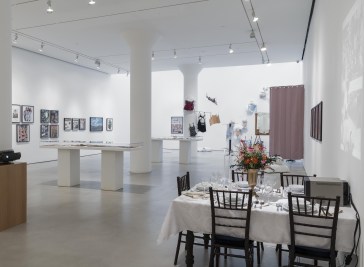
In the mid-1960s, Martha Rosler began creating photomontages exploring women’s material and psychic subjugation, manipulating popular advertisements from news, fashion, and home magazines to unearth their nefarious ideological operations. Rosler made this body of work, “Body Beautiful, or Beauty Knows No Pain,” (1966–72) alongside painting, sculpture, photography, video, and performance, stitching together a variable array of Conceptual art practices attuned to feminist politics. This set of critical tools informs “martha rosler: changing the subject…in the company of others,” a survey of the artist’s work currently on view at Mitchell-Innes & Nash in New York through January 21, 2023.
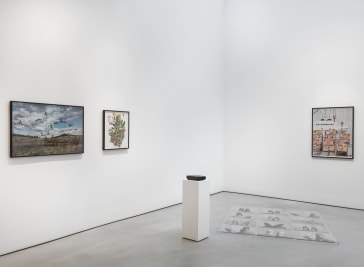
American multidisciplinary artist Martha Rosler describes her art as “a communicative act, a form of an utterance, a way to open a conversation” – and she has undeniably done just that throughout her politically and socially charged career. Now, at Mitchell-Innes & Nash gallery in New York, you can witness the enduring power of Rosler’s work for yourself, including her acclaimed early series of collages Body Beautiful, or Beauty Knows No Pain, which offers “often-derisive critiques of the pressures and fantasies brought to bear on women and girls”. In a dedicated screening space, meanwhile, you can discover a still-urgent selection of Rosler’s rousing films and videos from the 1970s onwards.
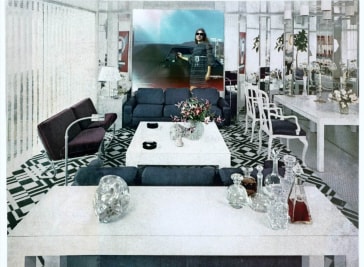
From Dec. 8 to Jan. 21, 2023, an exhibition of conceptual artist Martha Rosler’s work from the 60s and 70s titled martha rosler: changing the subject… in the company of others will be on display at Mitchell-Innes & Nash. Mediums include videos, photomontages, and sculptures that explore the perception of feminism through Rosler. Most of the photomontages on display come from the Body Beautiful collection that Rosler composed, beginning in New York and ending in California in about 1972. The inspiration came from seeing ads after attending feminist lectures during her schooling in the mid-60s, with Rosler calling the demonstration of women “bedroom appliances.” She created to expose the rampant control and objectification, particularly in the fields of domestic labor, food politics, colonial appropriations and the service industry. Her approach to art entangled feminism and politics, countering the belief at the time that they must remain separate.

Julia Child and Craig Claiborne are sitting in a small wine bar at the Pittsburgh airport, luggage at their feet.
Martha Rosler utilizes various media in her work, primarily video and photography, and also installation and sculpture; she also writes about art and culture. Her work has for decades considered matters of the public sphere and mass culture; war and geopolitical conflict; housing, urbanism, and the built environment, and systems of transportation—especially as these affect women. Many of her projects have been extrainstitutional or developed and enacted with groups of people. Rosler sees her work, her teaching, and her writing as continuations of a broader engagement with the currents of cultural critique and social and political change. Her work may best be summed up as both a conceptual art and an activist practice—focused on questions of representational form but joined, however uneasily, to a commitment to political agitation. Video, which she adopted in its infancy, presented itself as at the crossroads of both.
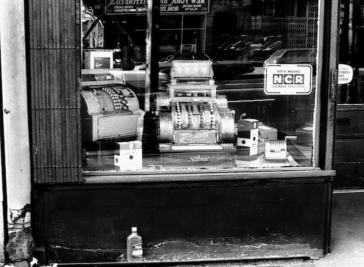
The conversation on documentary photography often comes with leitmotifs as “giving voice”, “raising awareness”, and “making a change”, which are unquestionably honourable aims, but with minimal effects, if the act is limited to freezing the “decisive moment”, suggesting that producing images is the summit of the photographic event. Instead, it is our engagement with pictures through discussion, consumption, and reaction, which defines the power of photography to fuelling change. This research focuses on the participatory photography potential to set the environment for taking collective action; starting from dismantling the idea of single authorship and leading to the definition of photography as the democratic tool for excellence.
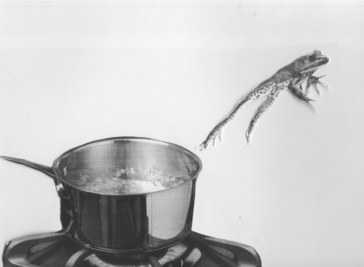
From Los Angeles to New York, thousands of Americans took to the streets to celebrate Joseph Biden’s victory in the US election on Saturday, as his slowly growing lead in Pennsylvania finally secured him the necessary Electoral College votes to win the presidency, and remove Donald Trump from office after a single term. There was a similar outpouring of positive reactions from the art world for the new President-Elect and his running mate, former California senator Kamala Harris—along with caveats that there are still pressing issues that need to be resolved across the country. “The frogs have managed to jump out of the boiling pot just in time,” the artist Martha Rosler told The Art Newspaper, sharing the photo collage she made, above.
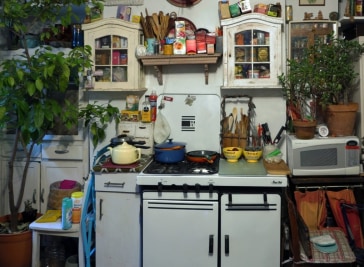
I am self-sequestered at home, as ordered by the people with a clue. That’s a rowhouse in Greenpoint. My studio is most of the house, so I don’t have to leave to go to work. I try to maintain a fairly healthy diet, mindful of the fact that I am getting far less exercise. I also want to support one or two of my local restaurants, so I occasionally get take-out.
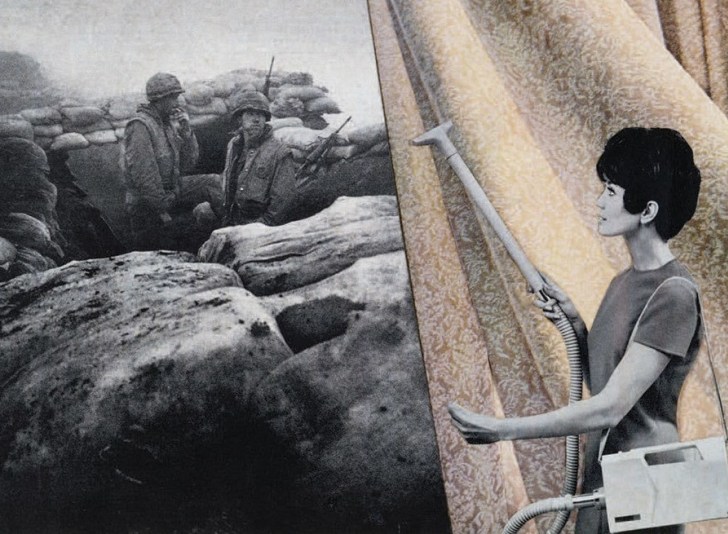
Rosler’s unmatched ability to wield consumer culture’s opulence against itself made for a visually festive retrospective. But sober critique unites the Semiotics of the Kitchen star’s half century of uninhibited Conceptualism; her early photomontage series “House Beautiful: Bringing the War Home,” ca. 1967–72, with its plush interiors and window views of carnage, still stuns.
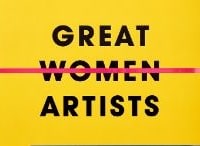
Last Thursday, art enthusiasts gathered at The Metropolitan Museum of Art for “An Evening with Great Women Artists,” a panel discussion moderated by Iria Candela, curator of Latin American Art, between Ghada Amer, Sharon Hayes, Deana Lawson, and Martha Rosler.
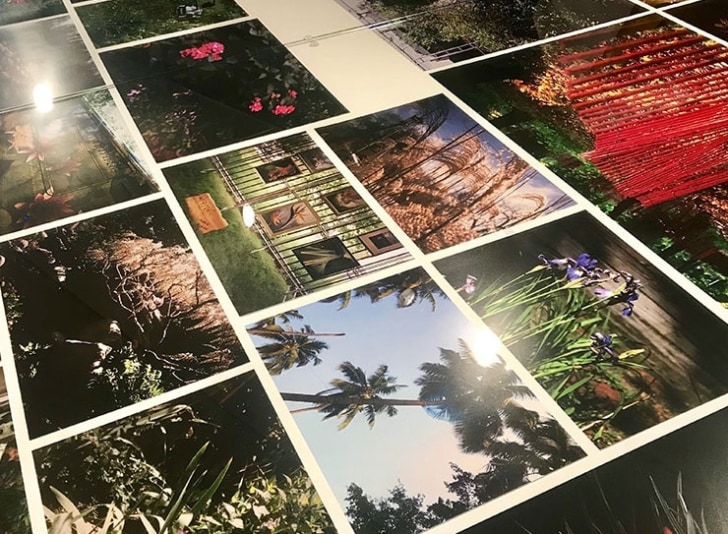
A new show at the Neubauer Collegium asks viewers to consider the work that goes into flowers from industrial to domestic contexts through the work of Martha Rosler, a conceptual artist and avid gardener who rose to world renown for her feminist art in the 1970s.
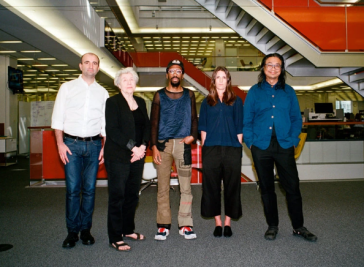
On a recent afternoon in June, T Magazine assembled two curators and three artists — David Breslin, the director of the collection at the Whitney Museum of American Art; the American conceptual artist Martha Rosler; Kelly Taxter, a curator of contemporary art at the Jewish Museum; the Thai conceptual artist Rirkrit Tiravanija; and the American artist Torey Thornton — at the New York Times building to discuss what they considered to be the 25 works of art made after 1970 that define the contemporary age, by anyone, anywhere. The assignment was intentionally wide in its range: What qualifies as “contemporary”? Was this an artwork that had a personal significance, or was its meaning widely understood? Was its influence broadly recognized by critics? Or museums? Or other artists? Originally, each of the participants was asked to nominate 10 artworks — the idea being that everyone would then rank each list to generate a master list that would be debated upon meeting.
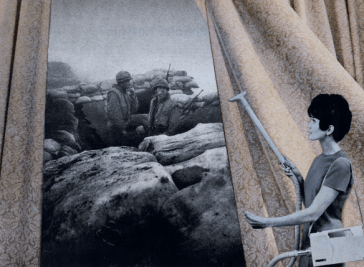
Hypnotically repellent, the picture prompts speculation as to the effect it might have had if enlarged to poster size and displayed at antiwar protests. Some of the show’s most memorable work was designed for exactly that purpose. Martha Rosler intended the color photomontages in her now-classic “House Beautiful: Bringing the War Home” series to be photocopied in black-and-white and passed out at demonstrations.
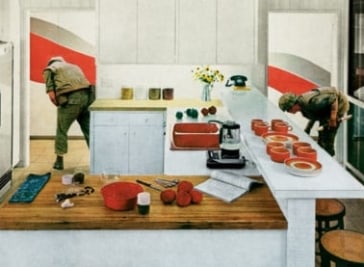
Although "Irrespective" is a remarkably fresh, thoughtfully curated overview of Martha Rosler’s art from the past fifty years, it does not aspire to be exhaustive. The exhibition features around seventy works, with not a single extraneous piece. Still, there is a wide selection, spanning from collages Rosler created in the late 1960s and early ’70s, when she was in graduate school at the University of California, San Diego, to a recent film about the Trump administration. Her long, productive career makes it difficult to categorize her practice. Conceptualism, feminism, appropriation, and relational aesthetics convey aspects of what she does, but none of these terms seems fully apposite. They leave something out, pigeonholing her into rubrics that simplify her concerns. As a kind of recourse, some commentators use the generalized label of “political” to describe Rosler’s approach. Politics is a thread that runs through everything the artist does; it is the baseline from which any activity commences. The diverse range of work in “Irrespective,” which viewers encounter in galleries filled with the background audio-wash of her videos, makes it clear that what really underlies her art is actually a kind of moral erudition.
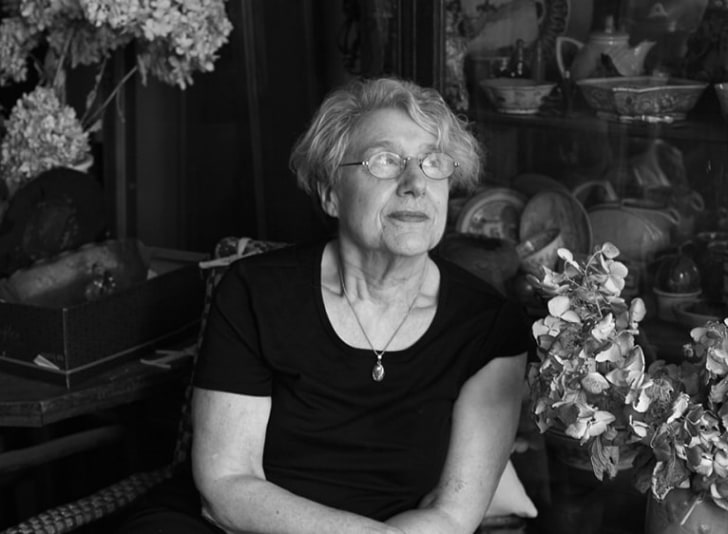
Martha Rosler knows that a well-formulated suggestion is far more likely to change the world — or at least someone’s mind — than any command or decree. “Every single thing I have offered to the public has been offered as a suggestion of work,” says the 75-year-old Brooklyn-born artist. Whether it’s her photomontages or videos, her sculptures or her installations, each offering retains a lively air of possibility and buzzes with the connective creative energy of a sketch — a feat made all the more impressive by her choice of subject matter: consumerism, feminism, gentrification, poverty, and war. Floating free of cynicism and buoyed by compassion, Rosler’s work can be devastatingly funny or amusingly devastating, and often both.
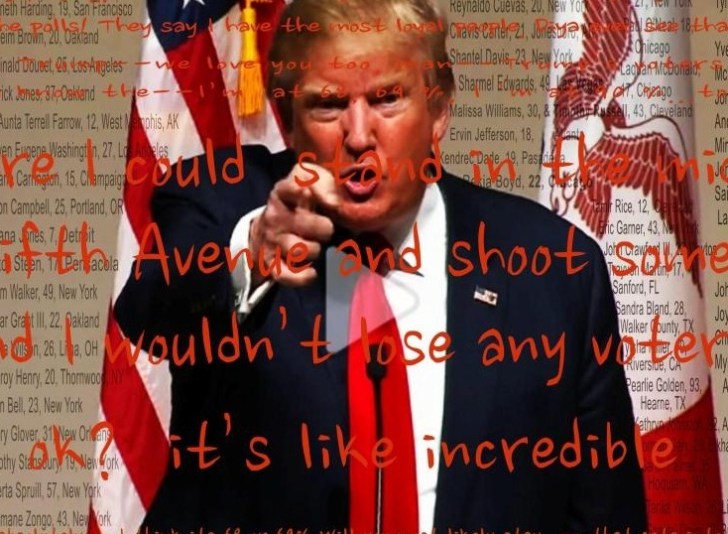
Damals Nixon und heute Trump, früher die Frauenbewegung und heute #metoo: Die Retrospektive von Martha Rosler im New Yorker Jewish Museum beweist, dass Kunst die Welt nicht retten kann.
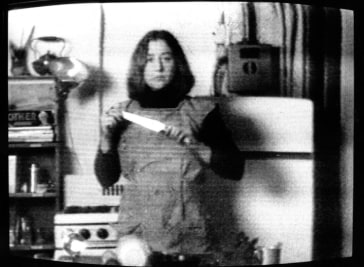
Martha Rosler hated the protest literature of the 1960s and 1970s. As she explained to Jewish Museum curator Darsie Alexander in a November talk, the messiness of the design was rivaled only by that of the messaging: no images, but jargon-heavy text more likely to be thrown out than to inspire action. Rosler thought, “Can I do better?” Could she show the horrors of war, of sexism, of the hidden and obvious ways women are looked down on?
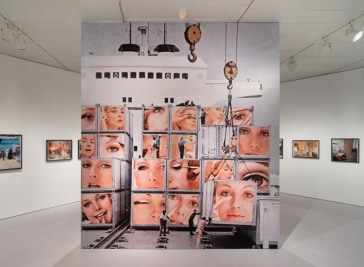
In a working life spanning more than fifty years, Martha Rosler has made art that eschews medium-specificity, asks questions, offers propositions, and invites responses. While idea often appears to drive material expression for Rosler, she also considers, beyond a politics of representation, questions of visuality and aesthetics—a likely influence of her early training as a painter.

Martha Rosler: Irrespective, an exhibition of works spanning the astonishing breadth of the artist’s fifty-plus-year career, is a tightly curated, highly focused exhibition—a survey organized around a discrete set of themes Rosler engages (war, consumerism, domesticity, politics, and mass media, to name a few) rather than a full retrospective.
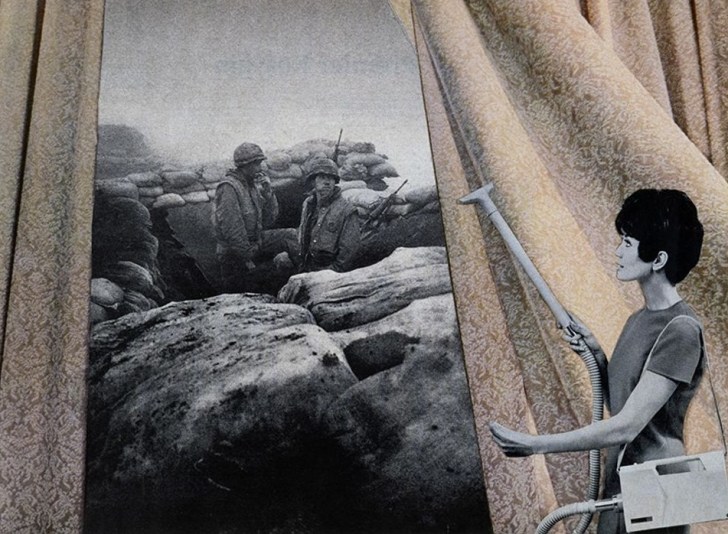
Though Martha Rosler has been working since the 1960s, her retrospective, Irrespective (until 3 March 2019) at the Jewish Museum shows how timely and timeless her new and old protest art is: she addresses gender roles, gentrification, US foreign war, police violence against people of colour, authoritarianism…subjects that might be familiar to any follower of the news today.
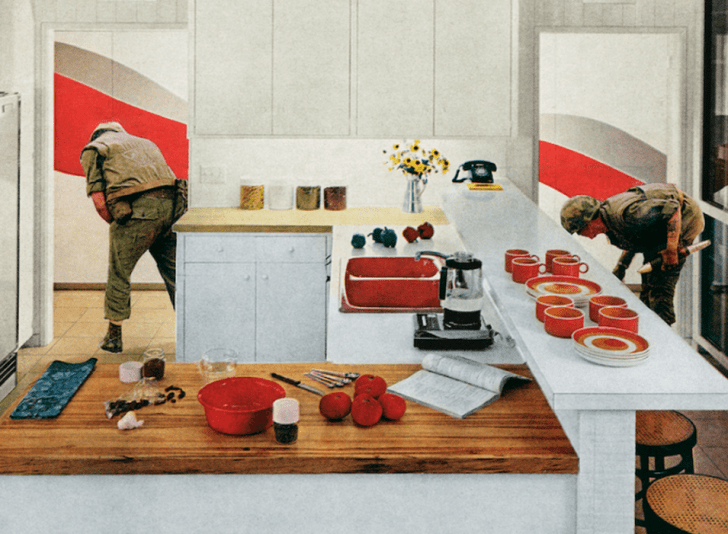
Rosler is fearless in her social, cultural and political observations about the contemporary United States, beginning in the era of the Vietnam War. Her work—always brainy—courses through a variety of subject matter: war, gender, gentrification, domesticity, inequality, and labor, but—like Goya—it is not without humor. Rosler’s wit is sharp, penetrating and unsettling.
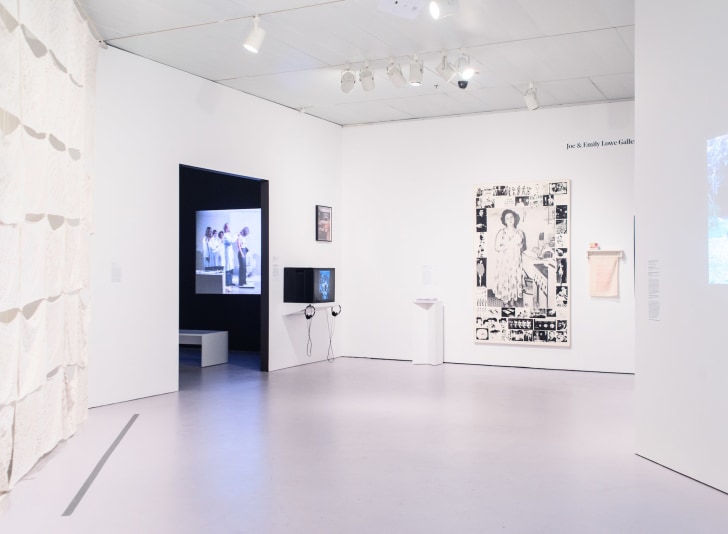
A multidisciplinary artist, writer and social activist, Martha Rosler has spent 50 years delivering biting feminist critiques on subjects ranging from gender to gentrification. But she is perhaps best known for her collages that juxtapose housekeeping ads with scenes from the U.S. wars in Vietnam, Iraq and Afghanistan. Now the Jewish Museum is focusing on these works and others as part of its survey “Martha Rosler: Irrespective.” Recently, Rosler sat down with us at her home and studio in Greenpoint to discuss her work, her neighborhood and the real meaning of cooking shows.
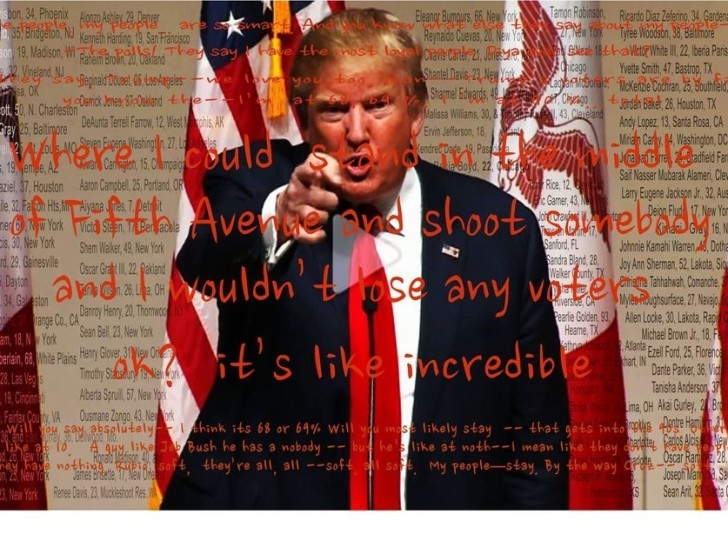
Trump is a familiar figure: a man who aspires to autocracy (after previously only aspiring to be a very rich and adored celebrity) and to the perks and privileges of kingship. He overcame his almost palpable shock and dismay at falling into the presidency, deciding to rely on others for advice while nevertheless opining and governing by whim. He makes no effort to represent all the people in the country and has refused to adopt the norms of modern governance by behaving in a civil and unifying way. His lies are overt and easily disprovable, his promises, insults, and threats are shocking, his self–interest and vindictiveness equally clear.
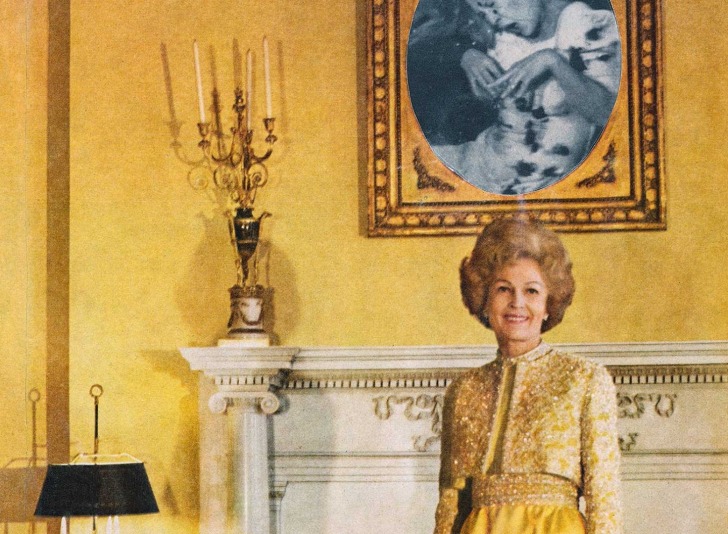
The title of her new exhibition, “Irrespective,” now on view at the Jewish Museum in New York through March 3, 2019, combines the words “irreverent” and “retrospective” and draws on her skepticism about having her work in institutions in the first place. A survey of her work since 1965, it is her first exhibition in her native New York in more than 15 years.
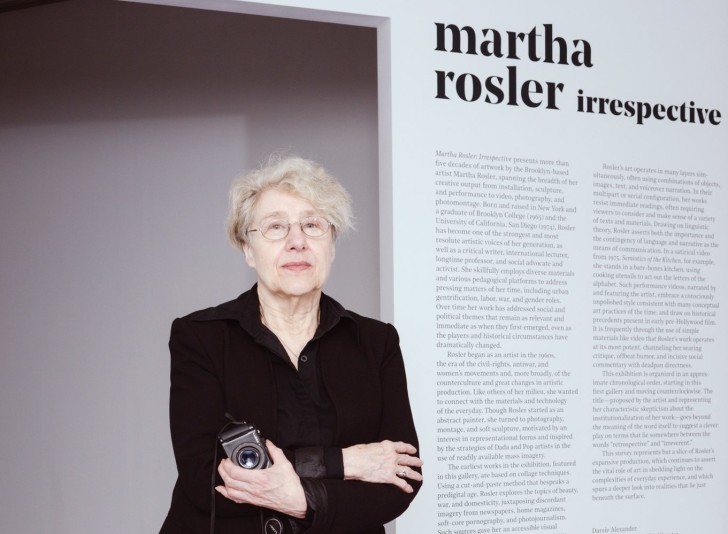
The first major New York survey of Ms. Rosler’s art in 18 years has opened at the Jewish Museum, and runs through March 3. For some, the show, “Martha Rosler: Irrespective,” may be an introduction to the prolific artist whose caustic work — in addition to photomontage and video, she creates installation, sculpture, performance and digital media — has been alternately admired and reviled by the public and the art world since the 1960s. Her exhibitions have focused on tenant struggles and homelessness; the Iraq and Afghanistan wars; public space; and — very often — the experiences of women.
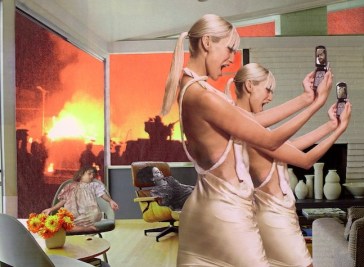
As Alexander said in her presentation, Rosler is, “an artist who’s always worked against the grain” – and we quickly realized we agree, as “Irrespective” is indeed filled with thought-provoking work that challenges the norm.
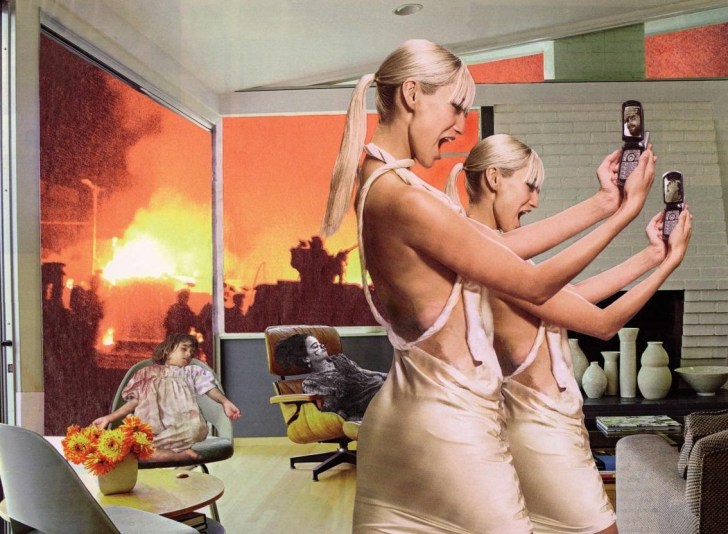
Self-absorption at the expense of social awareness may seem like an Instagram-born epidemic, but consider the Emperor Nero’s theatrics as fires were ravaging Rome. Since the mid-nineteen-sixties, the trenchant Conceptualist Martha Rosler has been fighting art-as-escapism with photomontages, videotapes, and installations, targeting the hypocrisy of war, sexism, gentrification, and other concerns that remain disconcertingly relevant. Rosler is also funny—her montages, an ongoing project that began in the Vietnam era, anticipated the Internet’s viral memes by decades—and she understands the power of humor to drive a point home.
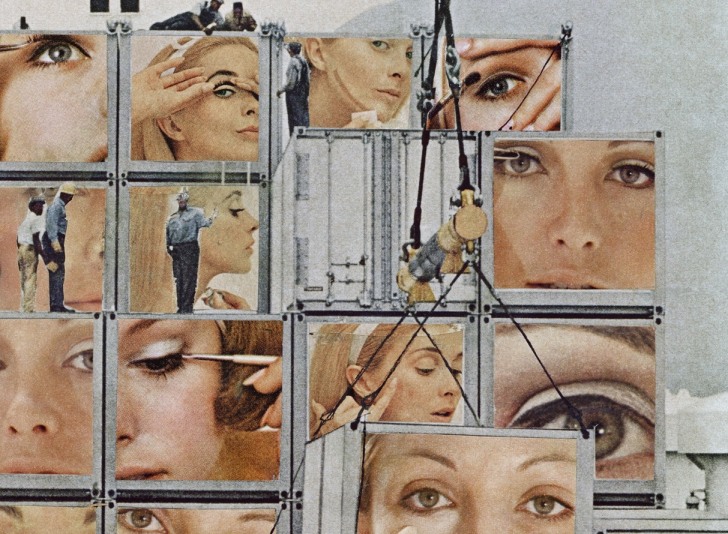
A retrospective at the Jewish Museum spans Rosler’s five-decade career. Featuring installations, photographic series, sculpture, and video, the exhibit probes far beyond “Semiotics of the Kitchen” to show us one of the most witty and dogged feminist artists of our time. In one photo collage, blond women snap selfies in a mod mansion as flames blaze outside the windows. In an installation, various women’s lingerie and sleepwear congregate around a white mattress. The cluster of thongs and spanx and granny panties alludes to the stories clothes tell about the women who wear them. Or perhaps just the stories we buy into.
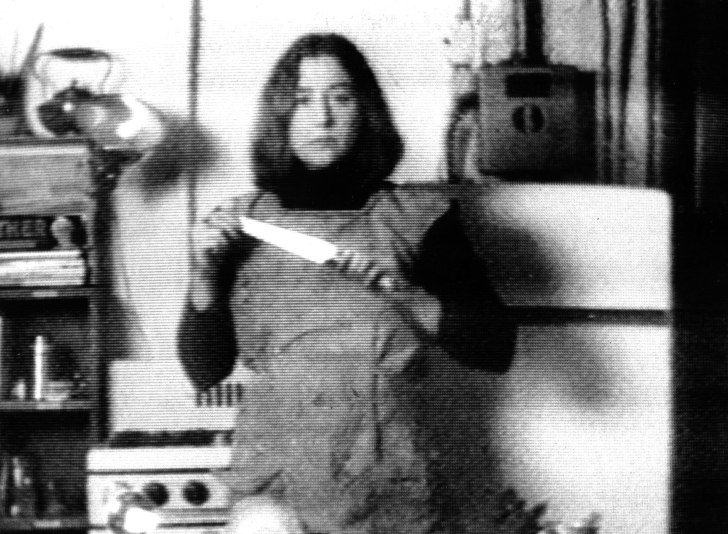
Nuanced but uncompromising, the video pretty much says it all. But it’s only one of the scores of photographs, videos and large-scale installations, from the 1960s to present, in “Martha Rosler: Irrespective,” a new retrospective at the Jewish Museum in Manhattan.
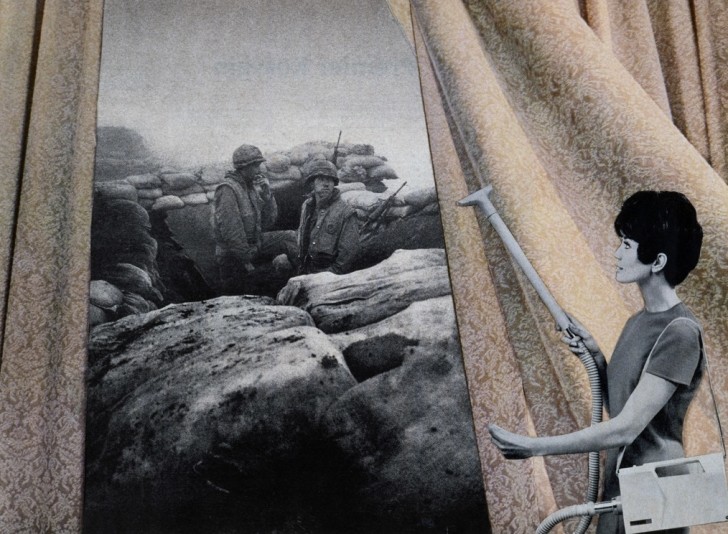
Martha Rosler’s first major New York museum show surveys her career by way of installations, photographs, videos, and sculptures. Among the themes addressed are war and consumerism, with a special eye toward gender norms and oppression. Curator Darsie Alexander said of the exhibition, “Martha Rosler’s direct, unvarnished take on current social and political circumstances is rooted in her belief in the capacity of art to teach, provoke, and ultimately motivate action in the people it reaches.”
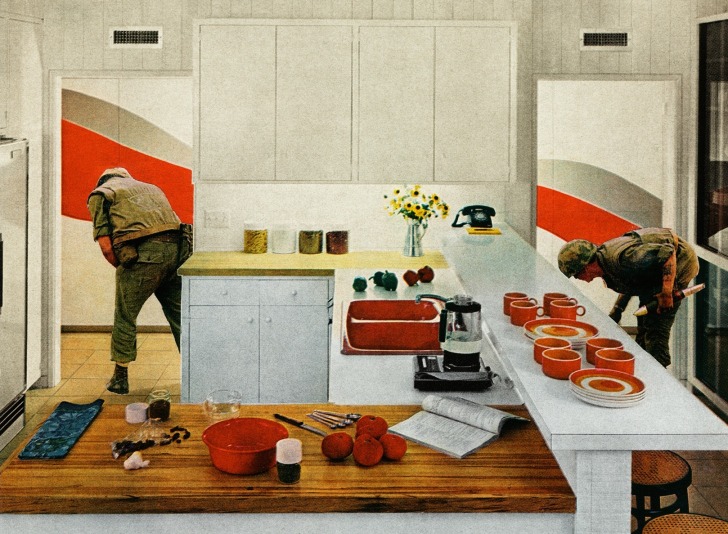
Riding the crest of first-wave feminist art, Rosler initially crashed onto the shores of the art world in the ’60s with pieces noted for their firebrand politics. During that time, and continuing until today, she’s deployed videos, photomontages and installations against targets ranging from sexism and the Vietnam War to inequality and gentrification—conjoined fronts, in her view, in an ongoing battle for social justice. This survey brings her career into focus, with a selection of works spanning 1965 to the present.
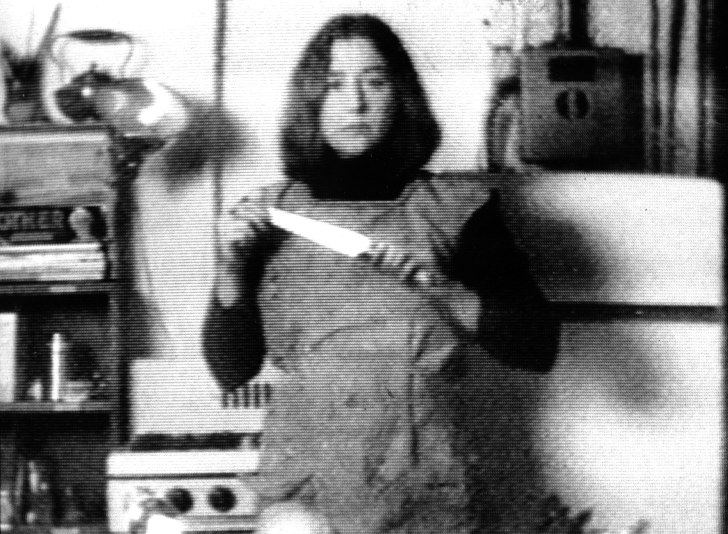
Feminist photomontage, “Martha Rosler Reads Vogue” and other pointed works — photography, sculpture, installation and video — from 1965 to the present, from an artist whose creations are both scathing and playful.
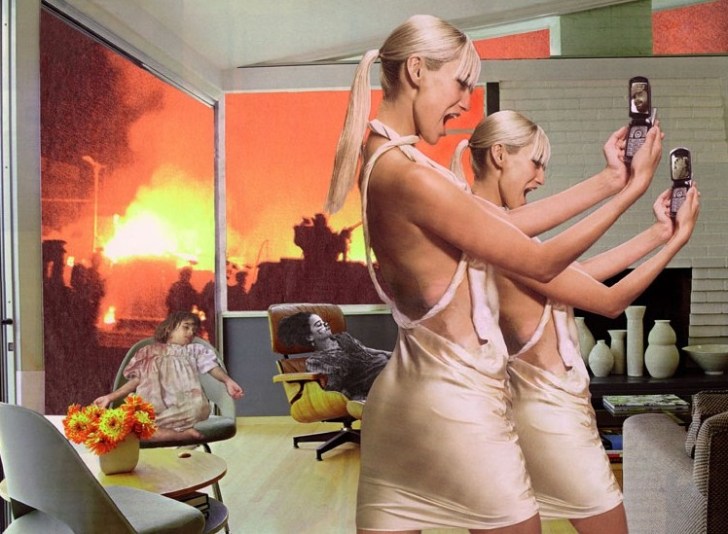
Given the ongoing political upheavals in the US, and the EU, what kind of artists’ work is relevant in an age of populist uprisings, when the far right is gaining power throughout the world? Martha Rosler and Hito Steyerl: War Games, one of the most important exhibitions of the year, offers compelling evidence in answer to such a question. This affectively and intellectually intriguing exhibition is noteworthy in demonstrating the surprising affinities and shared concerns across countries (US and Germany) and generations (’60s and ’90s) of two renowned women artists. Both are theoreticians and creative practitioners whose work reveals the capacity of art to understand and transform the violence which shapes our world.
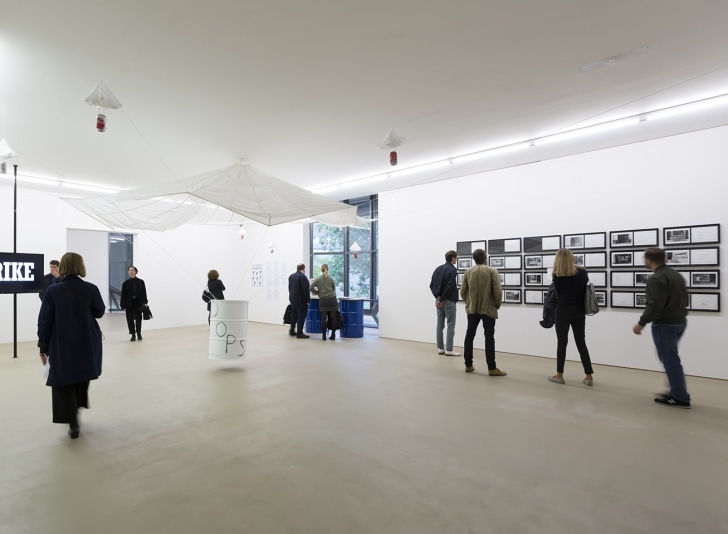
The War Games proposed by Martha Rosler and Hito Steyerl in their new exhibition at Kunstmuseum Basel reflect the pitfalls of a war fought in the folds of media and technology in the present. The show, curated by Søren Grammel, compares the artistic research of the two artists, who are of different generations but nevertheless have many common threads.
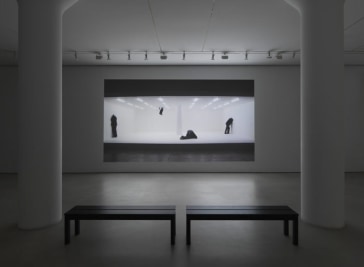
Though there is an immediacy in film that feels particularly poignant at this time, the show’s significance is not dependent on our culture’s heightened awareness. The ideas these videos consider are neither new nor are they temporary. They remain critical to examine decade after decade.
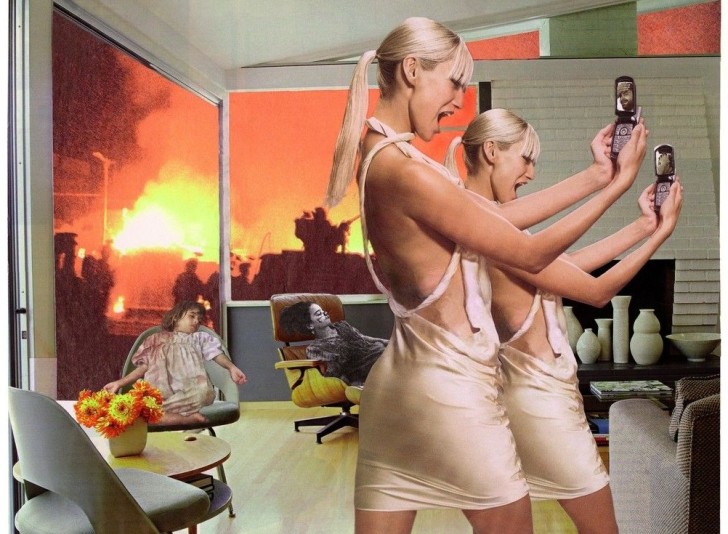
Martha Rosler thinks that Vietnam anti-war literature of the 1960s and ’70s was hideous. “It would be these long texts that looked like they’d been translated from a foreign language, and they didn’t have images,” the artist remembered during a recent conversation with Artsy. The pamphlets and other materials, she said, looked like they were made by people who were somewhat demented. Rosler decided the cause needed a makeover.
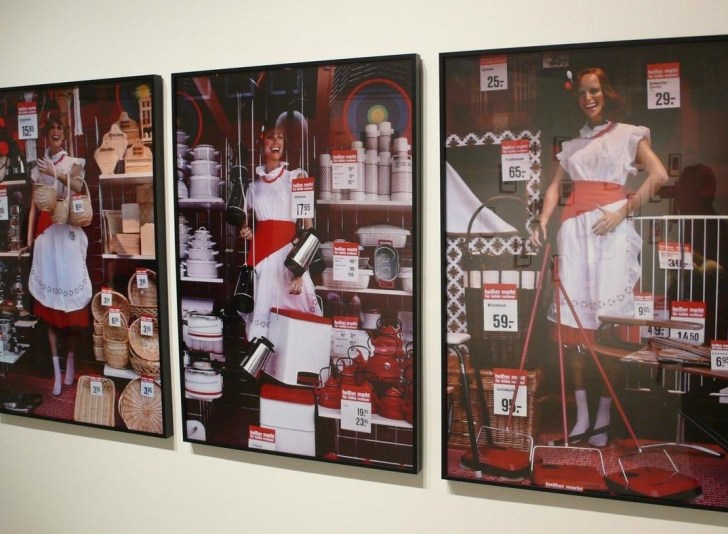
The latest show, "Stories That We Tell: Art and Identity," runs through March 3, 2018 and features the work of seven groundbreaking female artists, all of whom have been affiliated with the department over the years, but have never shown together. Eleanor Antin, Barbara Kruger, Faith Ringgold, Martha Rosler, Miriam Shapiro, Lorna Simpson and Carrie Mae Weems have created an assortment of works in varied media that explore the issues of identity, gender and race.
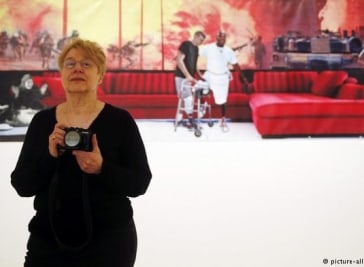
The American artist is known for not being afraid to voice her political opinions. DW spoke to her about the state of the American Dream, the role of artists in turbulent political times and US President Donald Trump.
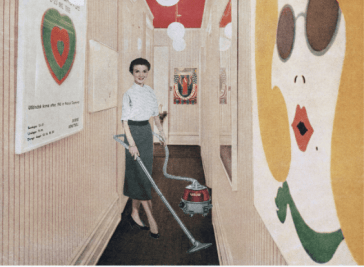
Artists featured in “Women House” span continents and generations, including Martha Rosler, Claude Cahun, Zanele Muholi, Nazgol Ansarinia, Joana Vasconcelos, Cindy Sherman, and Laurie Simmons. Their work transforms domestic space into a public forum, entwines the female body within architectural design, and explores notions of exile and confinement in socio-spatial terms.
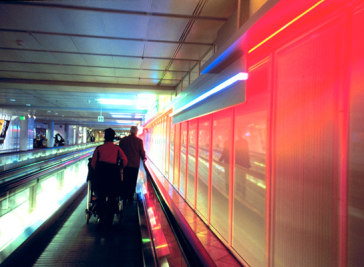
Martha Rosler calls it the “third-space effect”—a work environment so controlled that the “world shrinks to a bubble around myself, without the distractions of my daily life or environment or people.” One place she has this feeling is in airports. “I wrote one of my most-cited essays largely at the Atlanta airport way back in 1980 or ’81. I have often found myself able to concentrate in airports, but only if the waiting area isn’t packed, or if I can sit in a place that has tables,” she says.
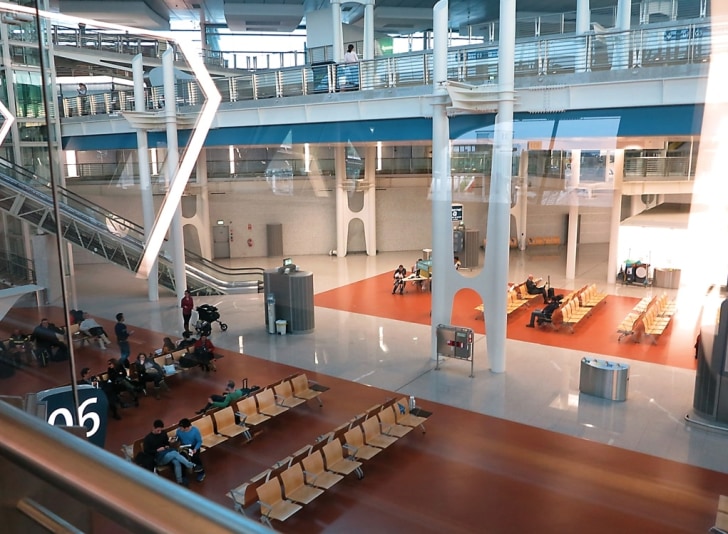
Since the early 1970s, through her photomontages, photographs, videos, installations, and critical writings, Martha Rosler has explored what mass-media images and public spaces reveal about power and persuasion in late capitalist society. “In the Place of the Public: The Airport Series,” her photographic exploration of the airport as postmodern space, dates from 1983 to the present. While Rosler has not changed the focus of the series, which remains on the airports’ interior architecture, she has changed the photographs’ accompanying text to reflect alterations in how airports are designed and utilized post-9/11. Earlier this year, she talked with ARTnews about the evolution of the series
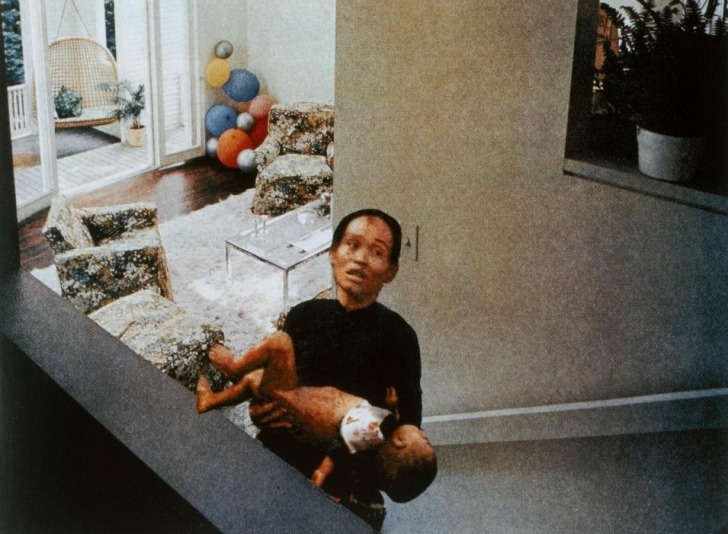
At the height of the Vietnam War, an artist named Martha Rosler started clipping pictures of the conflict from the pages of Life. She also collected images from adjacent pages showcasing luxurious American interiors. With a touch of glue, she merged the two, making up scenes that collided realities that mainstream media tended to keep comfortably separated.
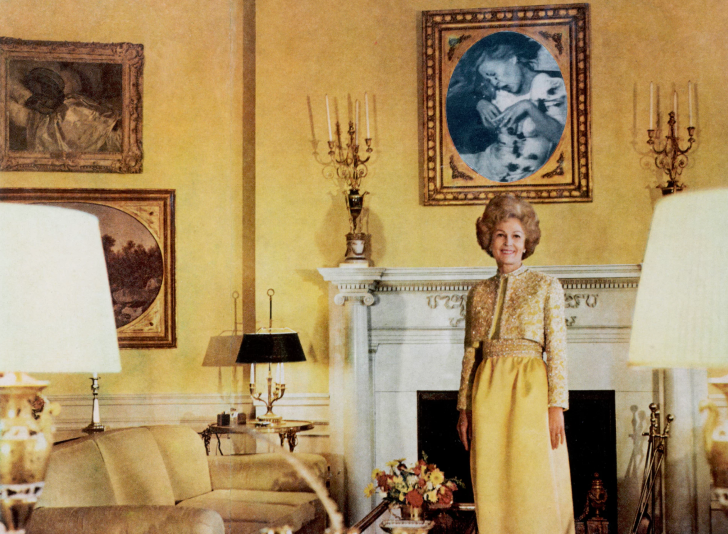
An anti-war protester at the time, Martha Rosler grew frustrated with the way such images were diminished when juxtaposed with trivial advertisements and inconsequential news items.

Alongside the current exhibition Feminist Avant-Garde of the 1970s: Works From the Verbund Collection at The Photographers' Gallery, the new issue of the quarterly publication Loose Associations takes feminism as its subject. In this interview, artist Martha Rosler considers the past, and the future, of feminist art practice.
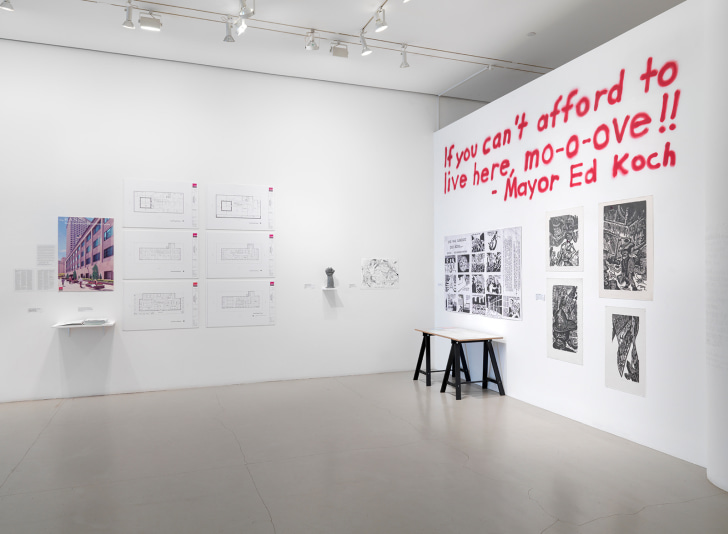
Into this fray comes Martha Rosler’s exhibition If you can’t afford to live here, mo-o-ove!!, at Mitchell-Innes & Nash. The title is a quotation from former New York City Mayor Ed Koch, who allegedly said this when confronted about the city’s housing problems. The show is full of umbrage, disillusionment, and rage, but also humor and clear-eyed assessment of the entire suite of difficulties involved in housing. The show is said to be the presentation of the Temporary Office of Urban Disturbances, which sounds like an ad hoc name for the group of curators and artists who have helped Rosler revisit her pioneering project If You Lived Here…. Taking place in 1989, If You Lived Here… examined similar themes and was originally shown at the Dia Art Foundation in three parts; the current project is also divided into three parts, the first two of which were shown at the New Foundation Seattle earlier this year.
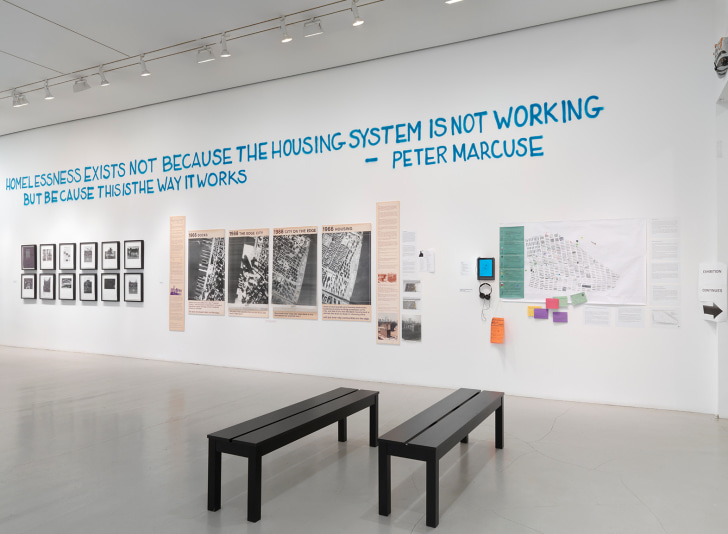
Martha Rosler is known for disrupting the standard exhibition format. She staged a giant garage sale in the atrium of New York’s Museum of Modern Art for her first solo there in 2012. Her current show at Mitchell-Innes & Nash reprises an ambitious project, titled “If You Lived Here,” at New York’s Dia Art Foundation in 1989. Each show in the series of three explored one issue—tenant struggles, homelessness, urban planning—presenting works by artists, filmmakers, squatters, children, and community groups, among others.
For this exhibition, which contains a section on each of the original themes, Rosler has subsumed herself under the name Temporary Office for Urban Disturbances to collaborate with scores of groups—such as 596 Acres, Inc., Center for Urban Pedagogy, New York City Community Land Initiative—and individuals, including LaToya Ruby Frazier, Gregory Sholette, and Robbie Conal. In addition to the dense hanging of artworks, posters, and other archival materials, along with an area to read books and watch videos, the exhibition features four town-hall discussions to examine pressing concerns about city life now.
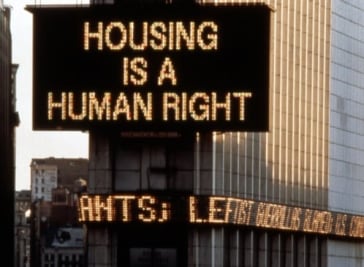
There’s news every week now of the mayor’s administration scrambling to find another parking lot or piece of land for more tent cities and car camps in Seattle. Meanwhile, Seattle is chockablock with massive real estate developments and fresh tech recruits. This is a state of emergency, as declared by the mayor in November.
A local philanthropist is bringing in backup. The backup is 72-year-old Martha Rosler, an artist and a fighter. In 1989, she commandeered the Spectacolor sign in Times Square in her home city in order to smear the commercial center with the ugly facts of the nation’s poverty and housing crisis. That public artwork was called Housing Is A Human Right, which is also the title of Rosler’s new year of exhibitions, talks, and workshops in Seattle, starting this weekend.
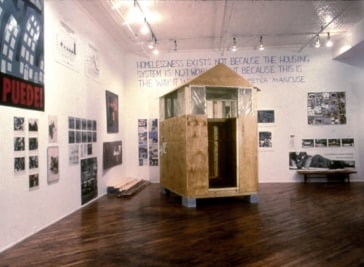
In a yearlong group of exhibits that will stretch across Seattle, internationally known multimedia artist Martha Rosler takes on big issues.
When Shari D. Behnke and Yoko Ott decided to create a prize for the New Foundation Seattle, they decided to go big. Really big. One hundred thousand dollars big.
“Well, we wanted an amount that would say something,” said Behnke, in a room at the foundation’s small, chic Pioneer Square gallery.
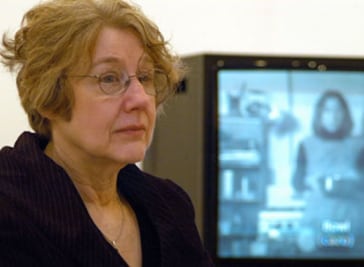
Martha Rosler has been named as the inaugural recipient of the 100K Prize, a biennial award given by The New Foundation Seattle (TNFS) to an influential, US-based female artist (including transgender women) to celebrate and reward her artistic achievements.
The non-profit organization TNFS was founded in 2012 by art collector Shari D. Behnke, and includes support programs for artists as well as public programs.
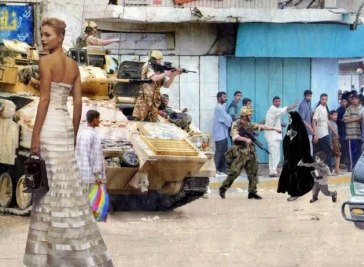
New Foundation Seattle, a non-profit arts organization founded by art collector Shari D. Behnke, has named Martha Rosler as the first recipient of its new 100K Prize.
The prize—as advertised—offers $100,000 in cold, hard cash and comes with zero restrictions (you can buy 100,000 dollar-pizza slices if you want).
“I am honored and delighted to be the first recipient of the 100K Prize from The New Foundation Seattle, an award instituted in recognition of women artists whose work has shown a commitment to social justice,” Ms. Rosler said in a press release.
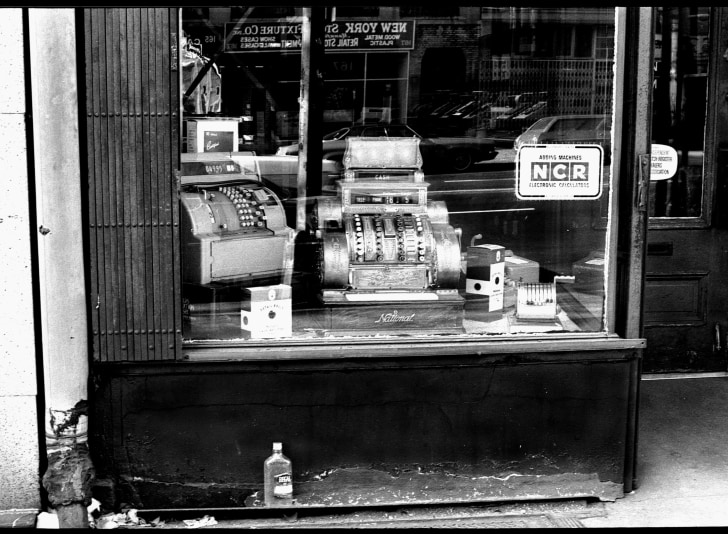
Representation gets a bad rap. Its inadequacy is inbuilt; it’s doomed to fail us; the thing it strives to capture and communicate endlessly eludes it. But it’s what we have, so we use our crude visual and verbal tools to circumscribe, gibber, and gesture. Drooling a bit, we imagine a method of communication that would translate its subject perfectly and entirely. Prior to the age of #nofilter, photography was believed to contain this possibility. Sometimes the medium —particularly the documentary genre — still pretends.
In the ’70s, photographer (and videographer, and rigorous cultural critic, and possible genius) Martha Rosler brought a critical eye, politically and philosophically, to the medium’s seductive pretenses of objectivity. Her photo-text piece ―The Bowery in two inadequate descriptive systems‖ (Dec. 1974–Jan. 1975), currently on display at the Lethaby Gallery in Central Saint Martins, wrestles with issues of representation and serves as a deadpan expression of her disappointment and frustration with mainstream humanist documentary.
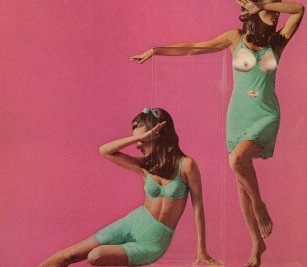
Martha Rosler is known for her incisive social critique—her writing, mixed-media work, and
photography have been widely esteemed since the 1970s. Rosler and James Eischen met at her alumni reception at the University of California at San Diego, where she gave an artists’ talk as part of curator Michelle Hyun’s discussion-based project We’d Love Your Company.
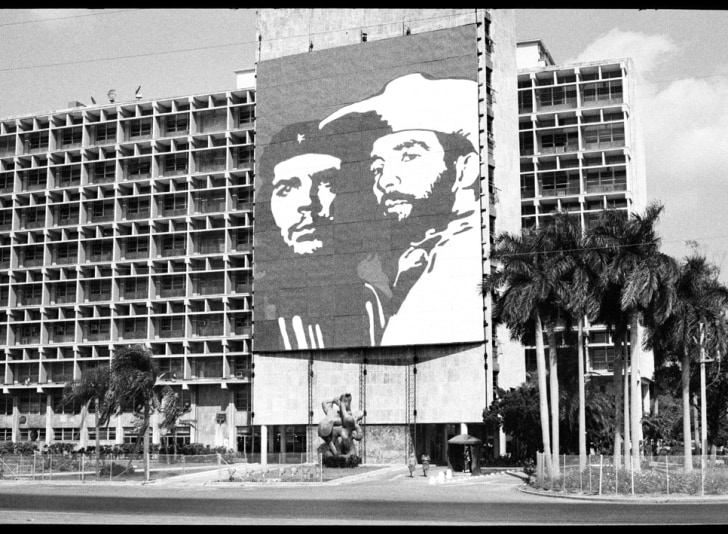
Hairdressers, Trinidad, one of several diptychs in Martha Rosler’s “Cuba, January, 1981,” shows two women looking at each other. In the first image, the blonde addresses the camera, seemingly in mid-speech, while the brunette watches her in profile.

One of the more striking aspects of "Cuba, January 1981," Martha Rosler's exhibition of photographs that were taken decades ago from behind the Caribbean iron curtain and are now on display for the first time, is how, to paraphrase Matthew McConaughey's famous line in Dazed and Confused, while the rest of the world has aged, Cuba more or less remained frozen in a continuous revolutionary moment.
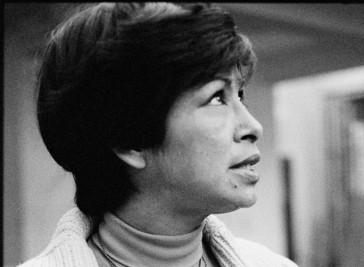
The agitprop photocollages that Rosler makes from borrowed materials are far more interesting than the photographs she takes, but both are the work of a fiercely engaged observer.
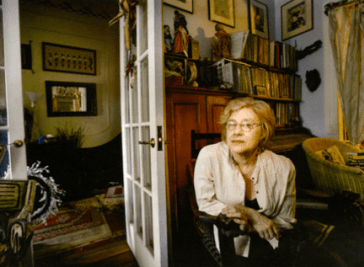
From video and collage to photography and writing, from feminism to social activism: Martha Rosler has influenced as many areas of endeavor as any artist alive. This month a show of never-before-seen photographs she took in Cuba some 30 years ago will open at Mitchell-Innes & Nash, in New York, and the Brooklyn Museum of Art will honor Rosler as part of its anual gala and the fifth anniversary of the Elizabeth A. Sackler Center for Feminist Art.
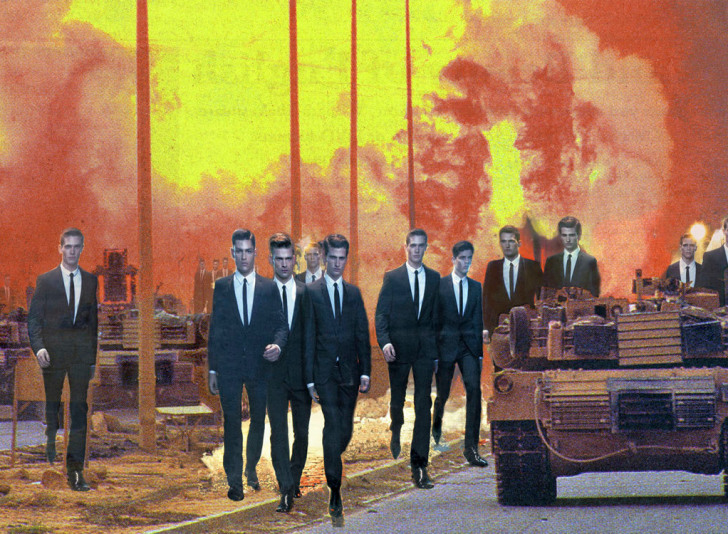
On a recent afternoon Martha Rosler welcomed a visitor to her three-story Victorian home in Greenpoint, Brooklyn to discuss her new show at Mitchell-Innes & Nash in Chelsea. Midway through the visit she said, "I'm a mad clipper, I don't know if you noticed." You can't help but notice.

e-flux and the Institut national d'histoire de l'art are pleased to announce the opening of Martha Rosler Library on Wednesday, November 14th at 18:30 hrs at Galerie Colbert. Comprised of approximately 7,700 titles from the artist's personal collection, the Library was opened to the public by eflux in November 2005 as a storefront reading room on Ludlow street in New York City.
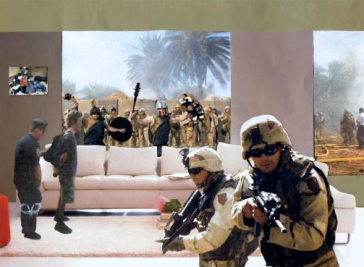
Martha Rosler's exhibit "Bringing the War Home" at the Worcester Art Museum unites the New York artist's signature anti-Vietnam War montages with her recent anti-Iraq war work for a jolting, heartbreaking look at the echoes between the two conflicts. Rosler was a pioneering feminist and political artist of the '60s and '70s.
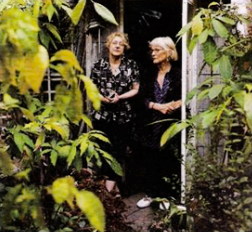
The names Martha Rosler and Joan Jonas mean nothing to some, but everything to others. The two artists, both born in New York, came of age in the Sixties and Seventies, when they made groundbreaking experimental work--Rosler in video, photography, photo-text, installation and performance; Jonas in performance, video and installation.

I KNEW I was going to be either an artist or a criminal,'' says Martha Rosler, the multimedia artist, critic, theorist, teacher and art-world provocateur. In a career spanning 35 years, Ms. Rosler, whose disdain for the normal rites of passage from galleries to collectors to museums struck many as indeed criminal, has clung tenaciously to a very personal art that refuses to separate aesthetics from politics.
